#travel rizal province
Explore tagged Tumblr posts
Text

"MIXTH" as a boy group name can be musically interpreted as a blend of rhythms, genres, and styles. Imagine a sound that's both fresh and unexpected, mixing elements of pop, hip-hop, and electronic music.
"MIXTH" suggests a group that's not afraid to experiment and create a sound that's both innovative and engaging. ❤️🧡💛💚💙💜🩷

Stage Name: ACE
Birth Name: LEE DO-HYUN
Position: LEADER, LEAD VOCALIST ,MAIN DANCER
Birthday: FEBRUARY 5, 2000
Zodiac Sign: AQUARIUS
Height: 5'5
Weight:
Blood Type: A
MBTI Type: ENFJ-T
Instagram: @Preslyflores
Representative animal: 🦁
Representative Color: Red ❤️
ACE Facts:
– He was born in Metro Manila, Philippines.
– Ace is from Mandaluyong, Philippines.
– Education: Mandaluyong highschool ,José Rizal University
– Her nicknames are JP, Presly, Jay, Press, John
– A couple of her hobbies are eating, sleeping, drawing, listening to music, napping, playing video games, reading, singing,
-- OZ.ONE - 오즈원's Kpop Divine Dance Cover#1stRunnerUp 🏆
-- IZ*ONE Violeta La Vie en Rose ,
Performed KPop Summer Blast (Season 3) IZ ONE La VIE EN Rose.
– His role model Seohyun (Girls generation)
– Ace says his charm point is his special aura.
– Two of her favorite drinks are Chocolate Drink and red Tea
-- Performed UST central lab
Annyeong Tomasino.

Stage Name: Sj
Birth Name: Shin Hyunjin
Position: Main Rapper, Lead Vocalist,Lead Dancer Center
Birthday: September 16, 2002
Zodiac Sign: Virgo
Height: 166 cm (5'4)
Weight: 67 kg
Blood Type: -
MBTI Type: ENTJ
Instagram: Shinjinolivar
Representative animal: 🐰
Representative Color: 🧡
HYUNJIN Facts:
- I was born in Cebu City, Philippines
- I was the Eldest
- I love Travelling, Watching Series, Editing Videos
- I hate Okra, but I love Eggplant
- My Favorite foods are, French Fries, Burger Steak and Pork Sigsig
- I love to cook and my Speciality is Adobo with Gata.
- I studied Elementary Grade 1-2 at HDA. EAMIGUEL ELEM. SCHOOL, Grade 3-5 at VILLALON CENTRAL SCHOOL, Grade 6 at Can-asujan Elementary School.
- I studied High School at Can-asujan National High School
- I studied Senior High School at DATAMEX INSTITUTE OF COMPUTER TECHNOLOGY (DICT)
- I Studied College at BILIRAN PROVINCE STATE UNIVERSITY (Bipsu) with the Course AB COMMUNICATION ARTS.
- NEX7Y'S CHENA AND I WE'RE COUSINS AND BESTFRIEND.
- I WAS PART OF BIPSU'S DANCE TROOP
- I WAS ALSO A PART OF PILLAR PUBLICATION AT BIPSU
- AND I WAS A FREELANCE PHOTOGRAPHER AT PILLAR PUBLICATION STUDENT'S ASSISTANTS.

Stage Name: Raver Lee
Birth Name: Raver
Position: Main vocalist, Lead rapper, Lead Dancer Center
Birthday: April 23, 2005
Age: 19
Zodiac Sign: Taurus
Height: 5'8
Weight: 60
Blood Type: O
MBTI Type: INFJ
Instagram:
Representative animal:🐱
Representative Color: 💛
RAVER Facts:
- Love to sing
- U&IS and Babymonster fan
- Fav color Black
- love cute animals
- BSCE course

Stage Name: MARK
Birth Name: Mark
Position: Main vocalist, Sub-rapper, Visual
Birthday: March 5, 2006
Age: 18
Zodiac Sign: Pisces
Height: 5'2
Weight: 47
Blood Type: O
MBTI Type: ENFP
Instagram:
Representative animal: 🐶
Representative Color: 💚
MARK Facts:
- Cat lover
- Plays Instruments
- K-pop Fan
- Likes to read manhwas and manga
- Watches anime and kdrama
- Sensitive

Stage Name: Trix Loop
Birth Name: Nerio jr
Position: Lead Vocalist and Sub-Rapper
Birthday: July 01, 2006
Zodiac Sign: Cancer
Height: 5'9
Weight: 52.2
Blood Type:
MBTI Type: ENTJ
Instagram:
Representative animal: 🐿️
Representative Color: 💙
TRIX Facts:
- Obsessed with songs around the world
- Likes to journal the sweet and bitter events in life
- Softhearted
- Coffee lover

Stage Name: Aikji Yuuma
Birth Name: Yuuma
Position: Sub Vocalist, Main Rapper, Leader Dancer Center, FOTG
Birthday: August 15, 2006
Zodiac Sign: Leo
Height: 5'8
Weight: 68
Blood Type: -A
MBTI Type: ESTP
Instagram: Tsukuyomi
Representative animal:🦚
Representative 💜
Yuuma Facts:
- song writer
- the second youngest in the group
- likes animals

Stage Name: Wu-jin dangca
Birth Name: Cedric
Position: Lead vocalist, Dancer, Maknae
Birthday: September 4, 2006
Zodiac Sign: virgo
Height: 5'8
Weight: idk
Blood Type: -O
MBTI Type: ???
Instagram: cedidancga
Representative animal:🦌
Representative Color 🩷
Wu-jin Facts:
- performer
- catlover
- softboy but can't control horrnyness
- Evie
2 notes
·
View notes
Text
Spitballing an alternate timeline
Imagining a different Philippine Revolution.
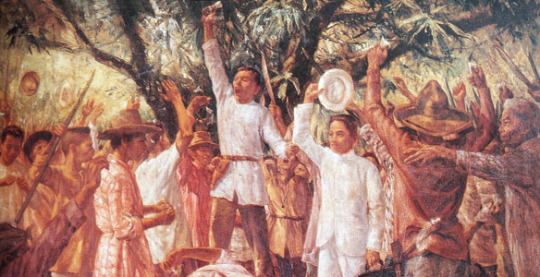
July 9, 1896. William Jennings Bryan, a populist (and avowed anti-imperialist), campaigns for the United States presidency. He was making his "Cross of Gold" speech. While popular, it wasn't enough to win him the White House. A party tied to his candidacy, the People's Party, petered out. The urban electorate seemed alienated by him. Maybe it's because of something in the speech:
"Burn down your cities and leave our farms, and your cities will spring up again; but destroy our farms, and the grass will grow in the streets of every city in the country."
August 23, 1896. After being discovered, the Katipunan convened in Pugad Lawin. Tearing their cedulas, they began the Philippine Revolution. Most Filipinos tend to know how it went. The leader of the Katipunan, Andres Bonifacio was overshadowed by Emilio Aguinaldo and later executed. After a protraced war, Aguinaldo made a pact with the Spanish to go to Hong Kong in exile. The Revolution came back in full swing during the Spanish-American War, declaring independence from Spain and a republic. It eventually got curbstomped by the United States after buying the Philippines from Spain who sold it to save face. Aguinaldo surrendered. The rest, some say, is history. It's a pretty horrible one.
So like, what if it wasn't?
Heavily armed zoomers isekai'd to the Victorian times
POD: In July 9, 1896, Bryan does a quick fib and doesn't say the aforementioned line in his "Cross of Gold" speech. He wins big in the elections. Now, here is where it get's absurd.
At the exact same time in the other side of the two young Filipinos from the future, an Anarchist and a Marxist, wake up in the past, in Balintawak. They have nothing in common other than a) they're well read on history, and b) have lofty, albeit conflicting visions for the country. With them is a big shipping container filled to the brim with M14s, RPG-7 rocket launchers, grenades, radios, and enough ammo to last them.
They have no idea how it got there, no idea how they got there, or who one another is. But this gives them an idea.
In days, our time travellers (aka the "uptimers") meet Bonifacio and talk to him about the cache. The guns were demonstrated in private, and offered training in the new arms. The two are inducted into the Katipunan, and eventually, endeared themselves to its leadership's inner circle as advisors.
The Light of Liberty shines upon the East
The Revolution proceeds as scheduled. The Katipunan is discovered, mass arrests and crackdown lead to anti-Spanish riots and sentiment, the Cry of Pugad Lawin happens. The Katipunan wins San Jose del Monte after ambushing Spanish reinforcements. A mix of modern guerilla tactics, firearms, and the power of hindsight allowed for more victories around the "Eight Revolting Provinces".
As Spain sustains losses, native regiments defected and throws Madrid into disarray. Jose Rizal would be freed from Fort Santiago, but states that he wouldnt join the Revolution. Without the losses that led to Bonifacio's downfall in the Tejeros Convention, a different convention in Calamba confirms the Tagalog Republic as is, united under a triumvirate of Rizal, Aguinaldo and Bonifacio (Aguirizbon). They establish local governments, held elections and dialogue with the people under revolutionary rule.
Delegations to the United States, China and Japan were organized, years earlier than IRL. This becomes a factor for Bryan's administration to intervene in the Philippines during the Spanish American War. Thanks to greater anti-imperialist sentiment in both the public and Congress (albeit colored by anti-immigration rhetoric), notions of invading the country is more easily dismissed. Thanks to greater successes on the ground, support from fellow East Asian countries is magnified, from arms shipments (see IRL Nunobiki Maru) to volunteers from the Revive China Society and Japan.
By 1898, the Revolution has the upper hand, even taking some ships from the Spanish. It had also spread to all parts of the country; In Zamboanga, Katipunero Vicente Alvarez manages to unite the Lumads, Christians and Muslims to siege the Spanish stronghold in Mindanao. In Iloilo, the comite conspirador forms a provisional government. In Negros, a mock military march was all it took for the Spanish to fold. A three-front maneuver from the south in Cavite, the north in Bulacan and the east in Morong (modern Rizal province) attack Manila. A final push sieges Intramuros and finally takes the city. A declaration of independence, drafted before the final push, is signed on June 12, 1898 in the Manila Cathedral.
America still deploys the Asiatic Squadron to the Philippines and, after a standoff with the German Navy, batters what is left of the Spanish Navy in the Battle of Manila Bay. Seeing Manila fully controlled by a "Tagalog Republic", the better perception spurs the American forces to negotiate with the Filipinos. Spanish control over its Empire ended in 1898, after an alternate Treaty of Paris recognized Cuban and Filipino independence. Since the United States still wants something out of this, Washington and Manila agreed for trade privileges and a naval base in Subic.
While independence is ensured, internal cohesion was still a pressing matter. The Tagalog Republic still relied on the Katipunan's bylaws (the dakilang kautusan) and the governments in Visayas and Mindanao, while pledging allegiance to the Katipunan, sought autonomy. A national convention was held and agreed to a federal system comprising the states of Luzon, Visayas and Mindanao. A special status for the Moro sultans was stipulated, and Sulu, by dint of legal succession, remains a protectorate of the new nation. In 1899, in a Congress held in the Ayuntamiento de Manila, the Philippine Republic is declared in Spanish, Tagalog and Hiligaynon.
Immediate ripple effects
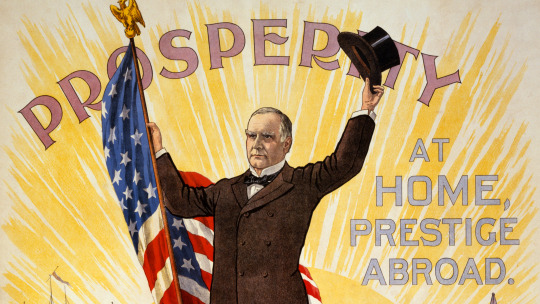
In America, Bryan's populist credentials opened the floodgate for other progressives to rise to prominence, from John Peter Atgeld, Henry George, Daniel de Leon to Eugene Debs. Bryan is still however hobbled by his government; parts of his agenda, such as rail regulation and banking reform would still have passed. With a tempered (but still assertive) foreign policy and a public receptive to populist ideas, much of the hallmarks of American imperialism and the surveillance state wouldnt take shape. Hawaii's annexation is averted, though it remains a special territory under an alternate Jones Law.
Urban migration is slower thanks to Bryan's rural leanings. Labor and class conflicts remain conventional and increasingly skewed in favor of workers. Later red scares are weaker and and civil rights causes are more popular despite Bryan's ties to Southern Democrats. A stronger Industrial Workers of the World is founded in 1905, competing with the American Federation of Labor for dominance and backing both Populist and Socialist Labor parties. With Populist Eugene Debs reaching out to George and de Leon, and the IWW's electoral backing, an old alliance is rekindled: the United Labor Party.

Back in the Southeast Asia, guns seized from the Filipinos surprised involved Europeans. How did backwards "indians" get ahold of such weapons? A new arms race begins; with auto rifles and submachine guns from WW1 and WW2 being invented decades before IRL. Japan even converted their bolt action rifles to semi-auto to stay ahead of the curve. The warfare of 1896 would be unknown to Europe until much later, however, with Russia still losing to Japan in 1905 (with minor help from the Philippines). Other technologies were much more freely given, such as when the uptimers, while visiting the US for the Olympics, sold Thomas Edison a license for their electric engine (see next section), while introducing Nikola Tesla to the transistor.
Licking their wounds from the Boxer Rebellion, the Qing Dynasty's continued resistance to change kept them at risk for unrest and invasion. The Xinhai Revolution happens as scheduled; with the lessons of the Philippine Revolution still fresh in their minds, the Tongmenghui (United League) organize a stronger Republican force. An agreement elects Qing general Yuan Shikai as president, though later sidelined by a still-living Song Jiaoren as prime minister. The Chinese Republic would later rebuild and develop, eventually giving Tibet, Mongolia, the Muslim lands and Manchuria autonomy under the principle of Five Races under One Union (wuzu gonghe). Korea however remains taken over by Japan, though due to Ito Hirobumi surviving (his would-be assassin dying sometime in the Russo-Japanese War) and clamor from Koreaphile sentiment at home and overseas, the Treaty of 1910 instead led to a personal union, with Emperor Meiji becoming the ruler of a Japanese-Korean Empire (to the tune of Austria-Hungary).
The events in the far east prompt Amsterdam to enact a more thorough Ethical Policy in their East Indian colony (modern Indonesia), fearing that poor conditions of the natives might lead to an equally devastating revolt. Education and public services are rendered to the natives more greatly, and while the Philippines assured that they have no interests in spreading influence into the DEI, the Dutch still tried their hardest to integrate Indonesia to their sphere. For the Filipinos, they simply encouraged wholly political activism down south—a diplomatic overture, essentially agreeing with the Dutch thesis that violence and "separatism" is an outcome of social neglect.
Developments in the Philippines
With Bonifacio, Jacinto and Rizal alive, they are able to formulate a distinctly Filipino politics after the Revolution. Jacinto completes his work Liwanag at Dilim (Light and Dark), forming a basis of a populist and Marxian liberalism called democracia nacional. The Katipunan dissolves in 1900, divided between Aguinaldo's and Bonifacio's factions. Rizal, fearing a crisis, refounds the Liga Filipina as a kingmaker party and a "check" on the states and parties. His fears, fortunately, would not come to pass; the government, in direct continuation of the old Tagalog Republic before it, proved stable.
Friar lands were redistributed, while pro-Revolutionary landlords in Luzon were encouraged to sell their lands and build industry in the cities through various incentives. Loyalist haciendas were broken up and awarded to Katipuneros. Some, like in Negros, managed to keep their lands in exchange for continued loyalty to the Republic. Most of the incentivized landlords transitioned well into new businesses, largely in brewery, tobacco and manufacturing raw materials, backed by American, European and Japanese investors. By 1905, the Philippine economy was booming and cities growing, thanks to a transitioning agrarian-industrial economy, exporting cotton, textiles, coffee, tobacco and sugarcane.
Industrialization was still a pressing issue, as uptimer advisors scrambled for ways to help the government catch up with its neighbors while maintaining the environment and keeping the growing business elites in check. One such effort was to push for nationalization schemes and labor regulations, including the institution of "national workshops" to guarantee employment and spur industry. Major infrastructure projects such as hydroelectric dams in Angat, Ipo and Caliraya became national priority to electrify the islands.
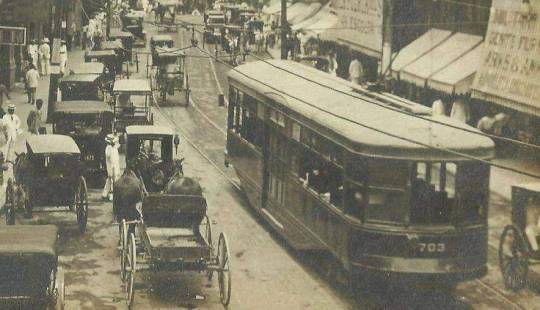
Despite this, both have used their party apparatuses outside Congress (the Marxist joining Bonifacio's party, the Anarchist Rizal's) to ensure their economic visions would come to pass should reforms didn't. The Anarchist uptimer went around the country to teach and found industrial cooperatives (farm tools, machinery, bicycles and guns), credit unions and schemes to buy and distribute surplus rice all around the country; while the Marxist helped found farmer's associations and labor unions, even organizing factory-workshops owned by said groups. These schemes often went in conflict with the haciendero conglomerates; the political system slowly began skewing and pillarizing, between the rural Aguinaldists, the urban, populist Bonifacians and the "cantonal" Rizalists.
Using future knowledge, the uptimers sought to create means for industry and communications in rural communities, from small-scale water turbines, earlier solar panels, efficient flow batteries, CB/ham radio (a similar device would be patented by Nikola Tesla), and LED lamps, to more low-tech solutions such as hydraulic power or pedal-powered systems and machinery to support and develop local economies as per Kropotkin's suggestions. Their greatest invention, a multi-use electric motor based on modern EV tech was manufactured and used for power generation by the cooperatives themselves to help with the manufacture of cheap but sturdy machinery. The invention of e-bikes would later lead to the proliferation of EVs in the country, defined by motorized pedal cars.
Philippine growth was modestly positive throughout the 1900s, though cultural ingenuity (discarte) and the uptimers adopting modern methods ensured that the country would make the best of it; fostering a thriving internal market while still profiting from exports. In the international stage, the Philippines gained prestige as a trade nexus between the East and the Americas, a veritable link that gave them the moniker the "Gate to China". With an economy based on people and an political system skewing populist, the inequality seen in Japan (ie. Zaibatsu) is largely muted in the Philippines.
Unlike in the Dutch East Indies (whose nationalist movement was still in its infancy at the time) Filipino radicals were much more inclined to interfere in the British and French empires, even secretly aiding groups such as the Jugantar, the Ghadar Party and the Quang Phuc Hoi. Linking with Pan-Asian groups in Japan and China, they established a clandestine political network that held a common, anti-colonial agenda.
Butterfly chaos in Europe
In Europe, the effects were profound. After Spain in 1898 lost against the Philippines (and Cuba and the US), Russia followed in 1905 against Japan, and then Italy in 1910 against the Ottoman Empire. All said countries suffered turmoil, especially Russia, whose loss marked the Empire's slow decline until their revolution. Spain had a dramatic transformation in the interim; pivoting to its remaining holdings in Africa, but later falling to its own uprising in 1914 after protests against conscription in their 1913 war in Morocco. Italy was essentially bankrupted by their 1910 escapades in Libya, and by a stroke of poor fortune, decisively lost against a plucky Ottoman Navy, leading to radical polarization between the Left and Right. In all cases, alongside China's own revolution, signaled to the West that Eastern Powers were on the rise.
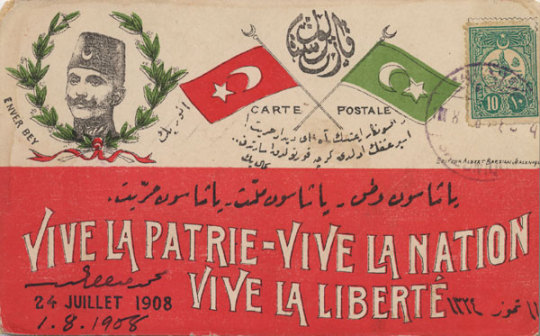
The Young Turks manage to prevent the coup of the Sultan Abdül Hamid II, forcing his abdication and the Ottoman Empire swinging fully to democracy. While discrimination remains a problem, the Armenian Genocide is averted, and the Ottomans even federalized, allowing for Armenians, Romans (ie. Christians west of Constantinople) and Arabs to attain nationhood while still under the Sultan. The relative stability afterward becomes key to keeping the Balkans and winning against Italy, who, after losing the Italo-Turkish War, fully integrated with its Triple Alliance with Germany and Austria-Hungary.
The ensuing Spanish Revolution of 1914 (often referred to as the "Second Cantonal Rebellion") led to the second Spanish Republic (and inadvertently, the Portuguese Revolution). Their disavowal of all colonial holdings opened a vacuum that would be fought betwern France and Germany the following year. A fatal naval standoff around the Straits of Gibraltar between the two powers leads to the Great War in 1915.
Great War, Red Triennium
Due to the nature of the "Gibraltar Incident”, both the Ottomans and the Russians stayed out of the war. Even a neutral Philippines implored Japan-Korea and China to follow suit. However, due to new developments in the arms race, the war still proved devastating and wide-reaching. The Americans, largely ambivalent over the war, remained entirely neutral, only giving the Entente financial aid through loans. Germany, long interested in keeping the Entente bogged down, began to support nationalist movements in India, Indochina and Ireland, with tacit assistance from China and the Philippines. When the War became more brutal and that of attrition, Germany also mulled fomenting chaos in its unstable east.
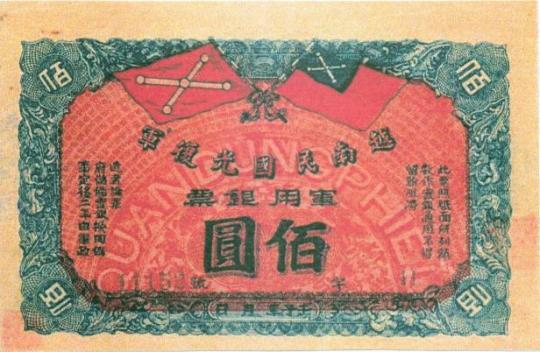
Britain and France hoped that Russia would join the war to turn the tide for the Entente. Due to the war, however, foreign investments have dried up in Russia, leading to significant economic distress. Public opinion was largely against joining the war, seeing it as a conflict between "Western nations". However, in late 1918 Russia was beset by another 1905-style wave of unrest due to the Czar expressing intentions to join the war, Germany organized to send an entire trains' worth of Russian political exiles to exacerbate the situation and essentially keep Russia out of the War. Among them is Vladimir Lenin.
Unlike 1905, by 1919 the Russian government have collapsed, and the Romanovs put into house arrest (later exiled to Canada in 1921) by the provisional government. Due to the presence of other figures, from Anarchists to Mensheviks to rival Bolsheviks to Socialist-Revolutionaries, Lenin wasn't in a position to foment a Bolshevik takeover as he would IRL in 1917, instead the Revolution plays out as a contest between the Provisional Government and the soviet-backed Constituent Assembly, with the latter winning. Without the October Revolution, most parts of the Russian Empire, save for (parts of) Turkestan, Transcaucasia, Poland and Finland remain in Russia as full-fledged states, while other ethnic groups establish new ones, such as the Tungus and Mountain Republics.
Inspired by the events in Russia, frustrated over the Flu Pandemic (called the "Kentucky Flu" since it was first recorded in the US instead of Spain) and struggling with the stalemate of the war, both Germany and France fell to strikes and mutinies months after a pressured Viktor Chernov convened Russia's Constituent Assembly. The "Strasbourg Commune" was declared by mutineers on both sides as they began to turn on their commanders, the first sign of revolution. While a truce was called by their governments, it was too little, too late.
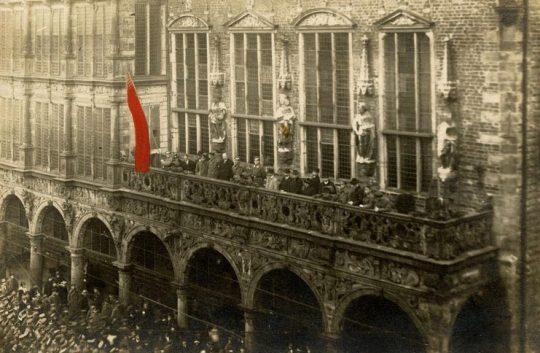
All of Europe collapsed over mutinies and strikes in a span of 3 years, hence being named the "Red Triennium" of 1919-1921. First was France, Germany and the Low Countries. Left wing groups began to act; a living Jean Jaures, sensing the tides, sided with the mutineers and strikers, while the CGT called for a "Second Commune". The German Social Democrats, including Rosa Luxembourg, also seized on the opportunity. The absence of Friedrich Ebert (dead in 1914) allowed the Social Democrats to lean into the emerging "Worker and Soldiers' Councils". By 1921, what is left of the German Empire has fled to a rump East Prussia, while France managed to retake Algiers the same year.
In 1920, Italy, the Low Countries, and Britain followed in the domino effect. Italy was beset by polarization for a decade; Mussolini died in the Libyan War, in his place the more radical National Syndicalists emerged: his friend Filippo Corridoni. Allying with the nationalists of Gabriele D'Annunzio and the Communists of Antonio Gramsci, the nascent "Italian Social Republic" took over the country in an earlier and more violent March on Rome, later backed by the Franco-Germans to consolidate their power in Italy. In Britain, a contentious general strike turns violent after Prince Edward in Black and Tan clothes shot a civilian. As the strikes become revolutions and London overrun, the second British Commonwealth was declared in 1921. In the Netherlands, the Red Week is much more successful, effectively forcing the Dutch to leave for Batavia (modern Jakarta).
The resultant socialist states of Europe would later form an alliance during the 1922 Extraordinary Congress of the Socialist International; France, Germany, Austria and the Low Countries in particular agreed to form a USSR-like union called the Social Federation of Communes, the constituent states renaming themselves as such. Europe has been turned upside down, but the cascading effects of the war weren't done.
They really weren't
Suddenly cut off from Europe in 1921, the United States quickly fell into an economic depression. By this point, the ULP's Populist-Socialist alliance—held together by the IWW and the party leadership—has since formed a concrete social pillar, comprising a pillarized quasi-countersociety through union-owned factories ("Wobbly Shops"), credit unions, tenant unions, cooperatives and a strong bloc in Congress.
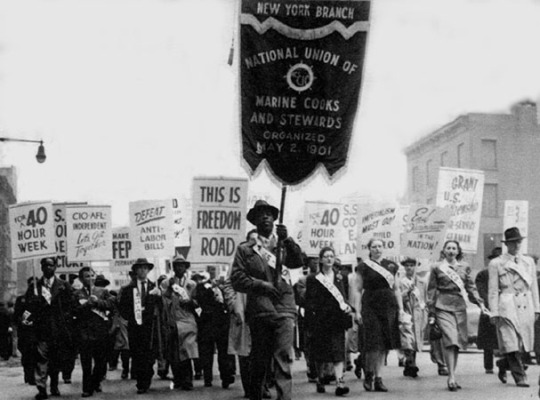
Years prior, in 1918, the country had suffered a general strike and a wider era of discontent (the "Red Summer of '18") after the conservative Democratic administration expressed a desire to join the War, a punitive labor law was passed, and ULP candidates-elect in New York City (including a Populist mayor) were physically barred from being sworn in by Tammany Hall goons with tacit approval of the President. Most of the striker's demands were fulfilled after backdoor negotiations with the ULP in Congress; repealing the law, affirming neutrality and allowing the NY ULP to be sworn in. It showed the strength of the Populist bloc.
While the Bolshevik revolution IRL led to a red scare, the ensuing depression after the "Red Tide" of Europe was easily and squarely blamed on the President and the "robber barons". The ULP-IWW members and voterbase largely cushioned from by quasi-countersociety institutions, used their relative benefits to campaign, winning the LaFolette-Debs ticket in a very contentious 1924 election by a whisker. The election of "Reds" prompted American proto-Fascists—the militarist American Defense Society—to concoct an earlier Business Plot, led by general George Van Horn Moseley. Just a year in office, they immediately overtook the White House, killing LaFolette in the process and staging a coup.
The surviving cabinet reconvened elsewhere and agreed that a Second American Revolution is necessary. The IWW immediately mobilized its unions and shops into a war footing, reorganized its security forces into an army, and the Home and National Guards were called upon in ULP and other loyalist-held states "to defend the Union". The Second Civil War lasted two years; in July 5, 1926, with European volunteers and aid, the Unionists retook Washington DC, and a new constitution was ratified. Holding direct continuity with the old US (keeping the flag and government), the new America is still an ostensibly Socialist one, with the economy organized along the lines of Daniel DeLeon and Henry George. Among other reforms, the Senate was abolished in favor of a syndicalist chamber for the Industrial Unions, and the Electoral College is done away with. Treaties with key Native American tribes are reaffirmed, and some, such as Alaska, Oklahoma and the Navajo were admitted to the Union as states. In 1927, after the refoundation and second Continental Congress of the United States, they aligned themselves to the Socialist International in Europe.
The world, by the 40's
The Philippines has become a stable and independent republic, one directly descended from the Katipunan. Industry is distributed throughout the country while urban density is embraced; thorough land reform and land use kept the dense forests and other natural habitats of the country flourishing. Due to its presence and influence, it managed to maintain a clearer link between East and West, sporting a composite, pluralist, and almost Swiss-style identity where it is both Hispanic and Asiatic. Economic interventions early on prevented the inequality defined by Korean Chaebols and Japanese Zaibatsu from taking shape, offering a counterpoint to Japan's more elitist vision of Pan-Asianism. The (admittedly) haphazard federal structure has also allowed for better rights and representation for indigenous peoples as they are able to appeal to states more receptive to their plight instead of a faraway centralized government.
There is no WW2 but wars continued to happen in that period; from the 1940 Amazon Wars between Colombia and Brazil, the 1930-40 "War of Three Suns" contest between Japan-Korea, the Philippines and China, the 1940-1944 Indonesian National Awakening, the Sino-Russian War of 1938, the Indian Unification of 1936, and Liberia's wars of conquest from 1923-28. For most of the time, the new world-system has largely set.
The West, defined as the Europe and the Americas (minus Brazil's sphere) are defined as a wholly Socialist bloc. Unlike the dogmatic and centralized USSR, the Social Federation acts more like Australia, and are largely defined by the tension between Syndicalist unions, worker councils and the Socialist parliament. The SF and the US are intensely modernist societies (even using a 13-month calendar!), and forms the core of the Bloc. Anti-Jacobin Brazil serves as a counterweight. Russia, while having sympathies to the West, do not consider themselves part of the Socialist bloc, seeing them as skewed towards urban workers. Speaking of the Americas, there has been an effort to form a more cohesive union between Hispanic America ("la patria grande") with anti-Socialists accusing it of being a tendril of US hegemony.
Socialism is much more diverse here, a common tendency with a spectrum between Marx and Proudhon (the SF skews more middle); in turn representing a clear "proletarian" and "agrarian" spectrum that define the Socialist world's political debate. Due to the influence of the Syndicalists, the Fascists are much more left-wing and has garnered controversy within the international movement. There is also Monarchist Socialism, a tendency in the Ottoman Empire, Sweden and Japan-Korea that are also generally accepted as part of the tradition. Americans and SFians scoff at the notion, still.
Due to Europe turning red, most of the colonized world were left rudderless. Some colonies, such as the Cape Colony, French Central Africa and German East Africa simply reformed themselves into independent governments (the Boer Wars were averted in this world). However, colonized peoples also reasserted themselves in other places, as with India and Indochina, but also the Tuareg Confederation in the Sahara, the Khivans and Bukharans of Turkestan, and the native states in West Africa. There is also a Black Nationalist state in the latter region, inspired by Marcus Garvey's ideas, encompassing IRL Liberia, Sierra Leone, Senegal and Guinea. Algeria, after protests to the Social Federation, is separated from France and declared its own Commune (hey, at least). For what its worth, New Imperialism was shattered by the Great War.
There seems to be a trend towards superstates and federations: there is Russia, the Social Federation, the US, Canada, Australia, China, the Tuaregs, the Philippines, maybe India, Iberia (Spain + Portugal), and the Ottoman Empire.
The Ottoman Empire (and its buddies, Egypt and Persia) are thriving after a bout of being the "Sick Man of Europe". Due to their influence and economic power (swimming in oil profits; while EVs dominate, shipping and planes still run on oil). India on the other hand, is a bit more like revolutionary Indonesia IRL, united by a more inward-looking nationalism. China, like Brazil, serves as a counterpoint bloc in East Asia.
Alternate technological innovations have led to the proliferation of alternate technologies. Transistors are innovated on earlier, leading to earlier advanced radios and television and computers. Better communications (ergo coordination) and earlier computing in the Socialist world prompts theories of cybernetics to influence policy. The internet as we know it wouldn't exist. EVs continue to be mainstream since the 1900s as gas vehicles don't take off, thanks to the invention of a more efficient battery and the multi-use motor. Trains, however, due to their sheer mass, still use oil. "Low-tech" coupled with radio and transistors predominates industries in the East, especially in India where things are still manufactured by hand.
The world is still rather unstable given the competing interests between regions and the world, but generally most of the fighting has subsided in favor of asymmetric interconnectivity.
I'm only sure about the events from 1896 to maybe 1921. The further I go from there the vaguer/broader it gets. But it's still a good place to start.
#raja posts shit#alternate history#philippines#i once had a ring#lore#worldbuilding#alternate universe#speculation#synergies#synergies lore#philippine revolution#i spent way too much time on this
21 notes
·
View notes
Photo

THE DESCRIPTION OF SAINT ANDREW Feast Day: November 30
"Love is acceptance. When you love someone... you take them into your heart, and that is surely why it hurts so much when we lose someone we love, because we lose a part of ourselves."
Andrew was born in Bethsaida in Galilee, and was the son of Jonah and the brother of Simon Peter. He is referred to in the Orthodox tradition as the First-Called (Protokletos). Both he and his brother Peter were fishermen by trade, hence the tradition that Jesus called them to be his disciples by saying that he will make them 'fishers of men'. At the beginning of Jesus' public life, they were said to have occupied the same house at Capernaum.
In contrast, the Gospel of John states that Andrew was a disciple of John the Baptist, whose testimony first led him, and another unnamed disciple of John the Baptist, to follow Jesus. Andrew at once recognized Jesus as the Messiah, and hastened to introduce him to his brother.
Subsequently, in the gospels, Andrew is referred to as being present on some important occasions as one of the disciples more closely attached to Jesus. Andrew told Jesus about the boy with the loaves and fishes, and when Philip wanted to tell Jesus about certain Greeks seeking Him, he told Andrew first. He is also present at the Lord's Last Supper. and was one of the four disciples who came to Jesus on the Mount of Olives to ask about the signs of Jesus' return at the 'end of the age'.
After receiving the Holy Spirit through Pentecost, Andrew preached the Gospel in many lands. The Chronicle of Nestor adds that he preached along the Black Sea and the Dnieper river as far as Kiev, and from there he travelled to Novgorod. Hence, he became a patron saint of Ukraine, Romania and Russia. According to Hippolytus of Rome, Andrew preached in Thrace, and his presence in Byzantium is mentioned in the apocryphal Acts of Andrew.
Andrew is said to have been martyred by crucifixion at the city of Patras in Achaea, in the year 60 AD. Early texts, such as the Acts of Andrew known to Gregory of Tours, describe Andrew as bound, not nailed, to a Latin cross of the kind on which Jesus is said to have been crucified; yet a tradition developed that Andrew had been crucified on a cross of the form called saltire (x-shaped cross or crux decussata), now commonly known as a 'Saint Andrew's Cross' — supposedly at his own request, as he deemed himself unworthy to be crucified on the same type of cross as Jesus had been. The iconography of the martyrdom of Andrew — showing him bound to an X-shaped cross — does not appear to have been standardized until the later Middle Ages.
Andrew is the patron saint of several countries and cities, including Barbados, Romania, Russia, Scotland, Ukraine, Sarzana, Pienza and Amalfi in Italy, Esgueira in Portugal, Luqa in Malta, Parañaque and Cainta (in Rizal Province) in the Philippines and Patras in Greece. He was also the patron saint of Prussia and of the Order of the Golden Fleece. He is considered the founder and the first bishop of the Church of Byzantium and is consequently the patron saint of the Ecumenical Patriarchate of Constantinople. The flag of Scotland feature Saint Andrew's saltire cross. The saltire is also the flag of Tenerife, the former flag of Galicia and the Russian Navy Ensign. The Confederate flag also features a saltire commonly referred to as a St Andrew's cross, although its designer, William Porcher Miles, said he changed it from an upright cross to a saltire so that it would not be a religious symbol but merely a heraldic device. The Alabama state flag also shows that device.
#random stuff#catholic#catholic saints#saint andrew#andrew the apostle#san andres#san andres apostol
6 notes
·
View notes
Text
7 PROVINCES IN 6 DAYS (Negros Oriental, Siquijor, Negros Occidental, Iloilo, Guimaras, Antique, and Capiz)
This trip was both exhausting and incredibly rewarding! I planned it for my 26th birthday. After six months of research, I finally created an itinerary that perfectly matched my flight schedule. Yes, I bought the plane tickets before finalizing the itinerary. I’m excited to share all the details with you—this will be VERY detailed!
Where to start?
I started my trip in Dumaguete, Negros Oriental, for easier transportation. My flight was 7AM.
I booked a flight from Manila (MNL) to Dumaguete (DGT) with Cebu Pacific. My flight was originally scheduled for 7 AM, but there was a one-hour delay. Fortunately, my tour guide was very kind and waited for me at the airport.
Day 1: Dumaguete, Negros Oriental
9:30 AM: Arrive at Dumaguete–Sibulan Airport. 9:30 AM – 9:45 AM: Wait for my checked baggage. 9:45 AM – 10:00 AM: Freshen up at the airport. It’s a small airport with only two restrooms, so it was a bit crowded. 10:00 AM – 4:00 PM: Meet up with Kuya Thony for the Dumaguete-Valencia Tour. I was a bit shy at first because I was running late, but Kuya Thony was incredibly understanding. I had booked a solo tour with him two months in advance. Despite the rain throughout the tour, which I usually dislike, we pushed on and I eventually forgot about the weather.
Here are the places we visited on the tour, including the entrance fees:
Subida Souvenirs Cata-al Museum: Donation only Tierra Alta: PHP 100 per person, PHP 50 for parking Sulfur Vent: No entrance fee Pulangbato Falls: PHP 100 per person, free parking Redrock Hotspring: PHP 100 per person, free parking Forestcamp Resort: PHP 200 per person, PHP 30 for parking Chada Valencia: No entrance fee Dumaguete Signage: No entrance fee Rizal Boulevard: No entrance fee Cathedral: No entrance fee Silliman View: No entrance fee Sansrival Pasalubong: Depends on what you buy Monkey Sanctuary: No entrance fee. Unfortunately, I didn’t get to see any monkeys because of the rain, though I spotted some in the distance on the mountains. Dove Feeding Plaza: No entrance fee, but you need to buy bird feed to attract the birds for photos. I opted for the larger feed, which cost PHP 50. 4:00 PM – 4:45 PM: Arrive at the hostel, Antwet Backpacker’s Inn & Rooftop Bar, for PHP 449.98 per night. After settling in and taking a bath, I headed out again at 7 PM. The hostel is conveniently located in front of the Negros Oriental Provincial Capitol.
I explored the area, took some pictures, and visited Rizal Boulevard, which was also part of the tour. Kuya Thony had mentioned it’s especially lively at night, and he was right—it was vibrant and full of energy.
Since I wasn’t very hungry, I looked for a café near the boulevard and found Tom N Toms Coffee. I ordered a mango yogurt smoothie for PHP 200. It was decent, and I spent about 30 minutes there before heading back to the hostel.
I prepared my things for Siquijor before sleeping.

Day 2: Siquijor
I booked a fast craft ticket in advance via the Oceanjet website, which cost approximately PHP 750 for a round-trip ticket. I mistakenly thought that purchasing the ticket online meant I wouldn’t need to wait in line at the port. Unfortunately, I was wrong. First, there was a long line to get a physical ticket, and then another line for the terminal fee payment of PHP 15. It would be helpful if they included all fees on the website to streamline the process for tourists. I wasn’t the only one confused; many other travelers seemed to be in the same boat. The travel time is approximately 45 minutes to an hour.
There’s also a cheaper ferry option costing around PHP 400 round-trip, with a travel time of about 2 hours.
5:30 AM – 6:00 AM: Wake up and prepare. I was supposed to check out of the hostel and leave my luggage there, but the reception was unavailable. So, I ended up booking another night through the Agoda app. I couldn’t reach the property representative either.
6:00 AM – 6:30 AM: Breakfast at Jollibee, which is conveniently located near the hostel.
6:30 AM – 6:40 AM: Head to the Port of Dumaguete. Remember to bring a valid ID, as it’s required for entry.
6:40 AM – 7:00 AM: Wait in line to get a physical ticket and pay the terminal fee.
7:00 AM – 7:20 AM: Wait for departure.
7:20 AM – 7:30 AM: Boarding. One thing I love about Oceanjet is their punctuality—they’re always on time!
7:30 AM – 8:15 AM: Fast craft ride from Dumaguete to Siquijor.
8:30 AM: Meet my tour guide, Kuya Dehm, outside the terminal. Although he wasn’t the guide I initially booked, everything went smoothly during the tour!
8:30 AM – 5:00 PM: Siquijor Tour—an action-packed day exploring the island. Here are the places we visited, along with their entrance fees:
Welcome to Siquijor: Free, located just outside the port
Saint Francis of Assisi: No entrance fee
Paliton Beach: No entrance fee; donation requested for photo ops by locals
Pitugo Cliff: PHP 30, plus PHP 30 for parking
Old Enchanted Balete Tree: PHP 20
Hapitanan Broom Shot: No entrance fee; donation requested for photo ops by locals
Lazi Church: No entrance fee
Lazi Convent: No entrance fee
Cambugahay Falls: PHP 20, plus PHP 30 for parking
Molave Man-Made Forest: No entrance fee
Salagdoong Beach: PHP 50 entrance fee, plus PHP 20 for parking
Cang-Isok Old House: No entrance fee; only for sightseeing, as you cannot enter
Lilibeth Pan Bisaya
Kuya Dehm and I parted ways at exactly 5:15 PM outside the port where we initially met. The Siquijor port is more convenient than Dumaguete’s. I just showed my e-ticket and paid the terminal fee. Although there were plenty of tourists, the line moved surprisingly fast. I waited until 6:00 PM.
6:00 PM – 6:15 PM: Boarding.
6:15 PM – 7:10 PM: Fast craft ride from Siquijor to Dumaguete. This was the most terrifying hour of my life—the weather was cold, the craft was fast, and the waves were huge due to the rain. It felt like a roller coaster ride. The woman sitting next to me said the rough ride was normal, though the waves were higher than usual. After this nerve-wracking journey, I took a tricycle back to the hostel. The caretaker was very kind and said it was no problem to leave my things in the room, even suggesting I shouldn’t have booked another night as it was unnecessary.
I checked out at 9:00 PM and headed to the Ceres Bus Terminal for the 10:00 PM bus to Bacolod. To my surprise, the only available bus was an ordinary one. The conductor advised me to wait for the 1:00 AM air-conditioned bus, which would be more comfortable.
In the midst of it all, I forgot to have dinner on my birthday! I quickly took a tricycle to Bazinga Dumaguete, where I enjoyed a burger and fries combo for PHP 200. It was delicious! I stayed there until 11:30 PM and then returned to the terminal, where I almost missed the bus.
1:00 AM: The bus departed for Bacolod. I slept throughout the journey to save time and hotel expenses.

Day 3: Bacolod, Negros Occidental and Iloilo
I arrived in Bacolod at 6:00 AM and had breakfast at a carinderia next to the terminal—one rice and hotdog for just PHP 35, plus a free soup!
Since it was too early for the museum and The Ruins, I decided to explore the area:
7:00 AM – 7:45 AM: I took a tricycle to the Plaza, which was only a 3-minute ride, but the driver asked for PHP 200. I was unsure and ended up paying him. I took a leisurely stroll around the plaza and visited the following attractions:
Bacolod Plaza Bandstand Welcome to Bacolod City arch City of Smiles San Sebastian Church 7:45 AM – 8:15 AM: Enjoyed coffee at Dunkin’.
8:15 AM – 8:50 AM: Walked to Capitol Park and Lagoon.
8:50 AM – 9:45 AM: Visited The Negros Museum.
9:45 AM – 10:40 AM: Took a Grab to The Ruins, but unfortunately, it was closed for an event.
10:40 AM – 11:30 AM: Headed to Manokan Country and had lunch at Aida’s Chicken. The chicken inasal was decent.
11:30 AM – 12:00 PM: Stopped by SM City Bacolod, which is conveniently located just in front.
12:00 PM – 12:15 PM: Walked to Bacolod Port and waited until my departure at 1:00 PM.
1:00 PM – 2:00 PM: Arrived in Iloilo, took a tricycle to my hotel, and checked in.
2:20 PM: Arrived at the hotel, which was quite old and lacked an elevator. My room was on the third floor, so I rested until 4:00 PM before continuing my tour.
4:00 PM – 4:30 PM: Started a walking tour around Iloilo:
Calle Real Sunburst Park Plaza Libertad 4:30 PM – 4:45 PM: Commute to La Paz Market by bus with a La Paz signboard.
4:45 PM – 6:00 PM: Had an early dinner:
Netong’s Original Special La Paz Batchoy Madge Coffee, the oldest coffee shop in Iloilo 6:00 PM – 6:15 PM: Took a bus to Jaro with a Jaro signboard.
6:15 PM – 7:00 PM: Explored Jaro:
Jaro Plaza Graciano Lopez Jaena Park Campanario de Jaro Jaro Metropolitan Cathedral 7:00 PM – 7:20 PM: Returned to Iloilo City Proper.
7:20 PM: Arrived back at the hotel.
I must say, Iloilo City has an excellent transportation system. Buses seem to go everywhere, which is very convenient. Plus, the hotel I booked is located in the city center, making it easy to get around.
Day 4: Guimaras
6:00 AM – 6:30 AM: Prepare to head to the port.
6:30 AM – 6:50 AM: Travel from the hotel to Parola Wharf. Advanced booking isn’t necessary. There are various fast crafts available, with fares ranging from PHP 15 to PHP 30 one way. I chose the PHP 30 option because it’s air-conditioned.
7:00 AM – 7:20 AM: Ride the fast craft from Parola Wharf to Jordan Wharf.
7:20 AM – 4:00 PM: Met my tour guide, Kuya Ryan, and we started the tour right away. Here are the sites we visited:
Jordan Signages: No entrance fee.
Smallest Plaza: No entrance fee.
Windmills and Man-Made Forest: PHP 30 entrance fee, PHP 20 parking fee.
Pitstop Restaurant (for Mango Pizza): I was skeptical, but it turned out to be surprisingly good! Free parking.
Guimaras Signages: Free parking.
Trappist Monastery: Free parking; donation requested for candles.
Guisi Lighthouse: PHP 30 entrance fee, PHP 20 parking fee.
4:00 PM – 4:20 PM: Travel back from Jordan Wharf to Parola Wharf.
4:20 PM – 4:40 PM: Return to the hotel to freshen up.
5:00 PM – 5:25 PM: Commute to Molo Plaza.
5:25 PM – 6:30 PM: Relax and explore Molo Plaza—there’s so much to see and do!
6:30 PM – 6:45 PM: Return to the hotel by riding a bus bound to Iloilo City proper.
6:45 PM – 7:30 PM: Prepare for bed and get ready for the trip to Antique.

Day 5: Antique
I woke up before my alarm and quickly got ready to start the day.
5:00 AM: Wake up.
5:15 AM – 5:45 AM: Prepare for the trip to Antique.
5:45 AM – 6:15 AM: Walk to the public market behind Robinsons Place Iloilo. I needed to catch a jeepney with the “Mohon Terminal” signage. I was a bit anxious about commuting since there weren’t many clear instructions online. Thankfully, the hotel receptionist kindly advised me to head to the back of Robinsons Place Iloilo and wait for the right jeepney.
6:15 AM: Arrived at Mohon Terminal. I was initially confused because the only bus there was headed to Kalibo. Fortunately, I asked the driver, who confirmed that the bus would pass by Anini-y, Antique, my destination. I boarded the bus to Kalibo but informed the driver to drop me off in Antique.
6:30 AM – 8:30 AM: Travel from Mohon Terminal to Siraan Hot Spring and Health Resort in Anini-y, Antique.
8:30 AM – 12:00 PM: Enjoyed relaxing at Siraan Hot Spring and Health Resort. The sulfur hot spring was wonderful, and the resort’s cliffside location offered stunning views. I would have loved to stay overnight, but I had other tours planned.
12:00 PM – 2:30 PM: Headed back to the hotel. I waited for a bus bound for Iloilo outside the resort. The bus dropped me off at Mohon Terminal, where I caught a ride back to Iloilo City proper.
2:30 PM – 3:00 PM: Freshened up at the hotel and then prepared for an Iloilo City tour.
3:30 PM – 3:45 PM: Took a bus with a “La Paz” sign from Iloilo City. This bus also passed by the museums.
3:45 PM – 6:00 PM: Explored the museums:
Museo Iloilo
National Museum Western Visayas Regional Museum (This one was particularly interesting; it was converted from an old prison into a museum.)
Both museums are conveniently located side by side.
6:00 PM – 6:20 PM: Rode the bus back to Iloilo City proper and stopped at Robinsons Place Iloilo for dinner.
6:20 PM – 6:45 PM: Dined at JD Bakery Café. I tried their Molo soup, which was decent.
6:45 PM – 7:30 PM: Strolled around Robinsons Place and nearly forgot to buy pasalubong. Luckily, there was a Biscocho Haus kiosk nearby!
7:30 PM – 7:40 PM: Returned to the hotel.
7:40 PM – 8:00 PM: Prepared for the trip to Capiz and then went to sleep.

Day 6: Capiz
I woke up extra early to prepare my check-in baggage. I had bought a bit too much biscocho and butterscotch, so I needed the extra time.
4:00 AM: Wake up.
4:00 AM – 5:30 AM: Prepare for Capiz and check out. I left my luggage at the hotel lobby before heading out.
5:30 AM – 6:00 AM: Went to the back of Robinsons Place again to wait for a jeepney bound for Jaro, as it would pass by Ceres Northbound Terminal.
6:00 AM – 9:30 AM: Traveled from Ceres Northbound Terminal to Roxas City Integrated Transport Terminal. There was light traffic, and we made a 15-minute stop in Passi City.
9:30 AM – 10:00 AM: From Roxas City Integrated Transport Terminal to Roxas City Plaza.
10:00 AM – 12:00 PM: Explored the city. Here are the places I visited:
Roxas City Plaza
Manuel A. Roxas Monument
Immaculate Conception Metropolitan Cathedral (Roman Catholic Archdiocese of Capiz)
Capiz Provincial Capitol
Ang Panublion Museum
Pres. Manuel A. Roxas Ancestral House
I initially planned to visit The Edge, but it was an hour away, and traffic was heavy.
12:00 PM – 12:15 PM: Took a tricycle back to the Integrated Transport Terminal.
12:15 PM – 4:00 PM: Travelled from the Integrated Transport Terminal to Ceres Northbound Terminal in Iloilo.
4:00 PM – 4:30 PM: From Ceres Northbound Terminal to the hotel in Iloilo. I took a jeepney bound for Iloilo City proper.
4:30 PM – 5:00 PM: I had planned to book a Grab to the Iloilo Airport, but fortunately, I found a couple of travelers also heading to the airport. The hotel offered a transfer service that was much cheaper—PHP 150 compared to the PHP 500 Grab fare.
5:00 PM – 5:45 PM: Transferred from the hotel to Iloilo Airport.
5:45 PM – 6:00 PM: Checked in.
My flight was originally scheduled for 7:30 PM, but as usual, there was a delay. We ended up boarding at 9:40 PM. You know there’s a delay when you see a Jollibee box at the gate!
10:00 PM – 11:15 PM: Flew from Iloilo to Manila.

EXPENSES
Dasma to Baclaran: PHP 60
Baclaran to Airport: PHP 200
MNL to DGT RT with 20kg check-in baggage: PHP 4,771.12
Breakfast at the airport: PHP 150
Coffee: PHP 255
Dumaguete-Valencia tour (tricycle, good for 2 pax): PHP 1,300 (Motorcycle tour for solo pax costs PHP 1,000)
Tip: PHP 500
Lunch: PHP 1,300
Coffee: PHP 100
Tour entrance fees: PHP 730
Hotel (2 nights): PHP 996
Cafe smoothie: PHP 200
Coffee: PHP 200
Souvenir: PHP 300
Total for Day 1: PHP 11,062.12
Day 2
Dumaguete to Siquijor RT OceanJet ticket: PHP 750
Tricycle to port: PHP 20
Breakfast: PHP 120
Coffee: PHP 200
Terminal fee RT: PHP 30
Siquijor tricycle tour: PHP 1,300
Tip: PHP 500
Lunch: PHP 1,200
Entrance fees: PHP 500
Souvenirs: PHP 500
Refresher: PHP 200
Tricycle from Dumaguete port to hotel: PHP 20
Tricycle to Ceres bus terminal: PHP 50
Tricycle from Ceres bus terminal to Bazinga: PHP 50
Tricycle from Bazinga to Ceres bus terminal: PHP 100
Dinner: PHP 250
Dumaguete to Bacolod bus fare: PHP 510
Total for Day 2: PHP 6,300
Day 3
Breakfast: PHP 35
Ceres terminal to plaza: PHP 200
Entrance fee: PHP 100
Coffee: PHP 100
Grab from Capitol to The Ruins: PHP 220
Grab from The Ruins to Manokan County: PHP 220
Lunch plus tip: PHP 250
Coffee at the terminal: PHP 50
Tricycle to hotel: PHP 100
Hotel (4 nights): PHP 3,462
Iloilo City to La Paz: PHP 15
Dinner: PHP 165
La Paz to Jaro: PHP 15
Cafe: PHP 200
Grab back to hotel: PHP 164
Total for Day 3: PHP 5,196
Day 4
Grab from hotel to Parola Wharf: PHP 125
Coffee: PHP 200
Iloilo to Guimaras RT: PHP 60
Tricycle tour: PHP 1,500
Tip: PHP 500
Entrance fee: PHP 200
Lunch: PHP 1,000
Parola Wharf to hotel: PHP 130
Iloilo City to Molo Plaza: PHP 15
Souvenir: PHP 100
Total for Day 4: PHP 3,830
Day 5
Iloilo City to Mohon Terminal: PHP 18
Coffee: PHP 200
Iloilo City to Anini-y: PHP 210
Siraan Hot Spring entrance: PHP 150
Anini-y to Iloilo: PHP 210
Lunch: PHP 150
Coffee: PHP 180
Entrance fee: PHP 200
Dinner: PHP 150
Pasalubong: PHP 5,000
Total for Day 5: PHP 6,318
Day 6
Iloilo City to Ceres Terminal: PHP 15
Ceres Terminal to Roxas City: PHP 210
Bus from terminal to plaza: PHP 15
Entrance fee: PHP 50
Coffee: PHP 165
Lunch: PHP 200
Tricycle from plaza to terminal: PHP 100
Roxas City to Ceres Terminal Iloilo: PHP 210
Ceres Terminal to hotel: PHP 15
Grab from hotel to airport: PHP 150
Coffee: PHP 250
Dinner: Free (due to delayed flight)
Coffee: PHP 255
Grab from airport to Dasma: PHP 1,500
Total for Day 6: PHP 3,135
Total Expenses for the Trip: PHP 35,841.12
Overall, this trip was the most expensive and exhausting journey I’ve ever undertaken, but it proved to be profoundly fulfilling. The Visayas region, with its stunning landscapes and vibrant culture, particularly Dumaguete, has truly captured my heart. Dumagueteños are some of the kindest and most welcoming people I’ve ever met. Their warmth and hospitality made every moment of the trip memorable and worthwhile.
Despite the challenges, such as navigating the various transportation options and managing expenses, the experience was enriching. From the breathtaking natural beauty to the rich cultural experiences, every aspect of the trip added value to my journey. The sense of community and the genuine kindness of the locals left a lasting impression on me.
If I ever decide to settle down or retire, Dumaguete will undoubtedly be at the top of my list. Its charm, combined with the incredible people and the serene environment, makes it a perfect place for a future home. The memories and experiences from this trip have cemented my affection for this wonderful region, and I look forward to returning someday.
#diy#diytravel#ph82#antique#capiz#negros#negrosoccidental#negrosoriental#iloilo#guimaras#bacolod#dumaguete
0 notes
Text
Kape Mapya: Brewing Community Success
Kape Mapya is a remarkable coffee shop founded by John Paul Catibog, dedicated to showcasing the exceptional quality of local coffee beans and supporting sustainable farming practices. Established in Taytay and now expanded to Antipolo, Rizal, Kape Mapya has grown into a symbol of the power of local sourcing and community support.
A Commitment to Local Sourcing
Kape Mapya sources its coffee beans exclusively from the Cordillera Provinces in the Philippines, a region celebrated for its rich and flavorful coffee. This decision wasn't merely a business move but a heartfelt commitment to promoting local agriculture and supporting the economic well-being of farmers in the region. By choosing local beans, John Paul aimed to showcase their quality and versatility while ensuring that the profits benefit the local community.
Innovative Employment Practices
John Paul’s approach to employment is equally innovative. Kape Mapya employs a mix of full-time and part-time staff, with part-time positions often filled by working students. This initiative provides students with the opportunity to support their education while gaining valuable work experience. Full-time employees receive a daily wage of 725 pesos for a 12-hour workday, including meal allowance and incentive, ensuring their well-being and fair compensation. This policy ensures high employee retention and satisfaction, creating a stable and motivated workforce.
Embracing the 'Support Local' Advocacy
From its inception, Kape Mapya has embraced the "support local" advocacy, creating a business model that thrives economically while supporting the local community. John Paul’s early experiences with local coffee highlighted its potential, reinforcing his commitment to promoting local agriculture. By employing people from the local community, Kape Mapya not only provides job opportunities but also fosters a sense of community and support among employees and customers.
The Inspiration Behind Kape Mapya
John Paul’s motivation came from a deeply personal experience with local coffee. During a visit to Kalinga Province, an elderly resident brewed a cup of coffee for him using traditional methods and local beans. The experience was a revelation. "I personally tasted a freshly brewed coffee by an elderly resident from the Kalinga Province. And it blew my mind how delicious that cup of coffee was. It wasn’t brewed by a barista, but by a local," he recalls. This encounter inspired him to share the exceptional quality of local coffee with others.
Impact of Kalinga Beans
The introduction of Kalinga Robusta beans has had a transformative impact on Kape Mapya’s business and the local coffee industry. Known for its strong and robust flavor, Kalinga Robusta has differentiated Kape Mapya from other coffee shops and created a steady demand for these beans. This demand has positively impacted local farmers, providing them with a reliable source of income and encouraging sustainable farming practices.
Fair Wages and Community Impact
Kape Mapya’s commitment to fair wages ensures high employee retention and satisfaction. "Fair wages are essential to business because it ensures a high retention rate. Our first employee has been with us since day one," John Paul notes. This stability allows Kape Mapya to maintain consistent service and quality, crucial for building a loyal customer base. Local employment also reduces travel time for workers, allowing them to spend more time with their families and contributing to less traffic congestion.
An Inclusive Workplace
Kape Mapya has created an inclusive workplace by not requiring prior employment experience. This policy has attracted many working students who appreciate the flexible schedules accommodating their academic commitments. "We made sure that having job experience is not a requirement for us; hence, more working students have taken interest in a job in our company," John Paul states. This inclusive approach provides valuable opportunities for young workers to gain experience and support their education.
Looking to the Future
John Paul envisions a future where Kape Mapya continues to uplift the local coffee culture. His goal is to establish a roastery to take full control of quality and work closely with farmers. "Our vision is to dive into the roots of Philippine coffee culture, to the point where we have our own roastery. Taking full control of the quality of working closely with the farmers," he explains. This approach will allow Kape Mapya to continue promoting the unique qualities of Philippine coffee and encouraging customers to choose local.
Community and Environmental Impact
By offering an alternative to imported coffee, Kape Mapya encourages customers to support local farmers, sustaining local agriculture and ensuring fair compensation for their produce. Local employment reduces commute times, contributing to less traffic congestion and supporting community well-being. Sourcing local beans also cuts the carbon footprint associated with importing coffee, aligning with sustainable practices and climate action goals.

0 notes
Text
Unlocking The City’s Navigation: A Southie’s Commuting Guide
Have you ever been afraid of commuting around Manila’s complicated structure? Whether you travel frequently or are a newcomer, it’s easy to get lost in the city, and it can be overwhelming. This will offer you the knowledge to get a good grasp of Manila’s intricate access points within and outside the city. This will teach you about mass navigation modes and terms that will guide you through key areas of the National Capital Region (NCR), especially within Manila City.
This article is intended for residents of South Luzon. The areas to be covered are Cavite, Laguna, Las Piñas, Muntinlupa, Pasay, and Parañaque.
This will equip you with knowledge of key terms, terminals, roads, and transportation routes that will serve as your compass, and bring you closer to your destination.
Lawton Avenue
Lawton is the most common and direct route to Manila. It's known for its proximity to Rizal Park, Manila City Hall, SM City Manila, the Post Office, and Quiapo Church. If you're in South Luzon, look for buses heading to Lawton, which will travel through Taft Avenue, and vans traveling to Lawton-MOA through Roxas Boulevard. This route will pass by Paranaque and Pasay via Coastal Road.
PITX
Parañaque Integrated Terminal Exchange – A transportation terminal located in Parañaque City. PITX serves as a major gateway for South Luzon, providing access to most of the NCR and even provinces of Luzon. In the terminal, you'll find jeeps, buses, and vans that will take you to LRT-1 and MRT-3, Lawton, and SM Fairview. This is an alternative for residents living in less urbanized areas who may not have direct access to transportation heading straight to Manila, particularly those in Laguna and the western parts of Cavite, such as Kawit to Cavite City. In your area, look for buses going directly to PITX, and in the terminal, inquire about the nearest gate for PUVs heading to your destination.
Cubao and SM Fairview
PUV going to Cubao and SM Fairview - While located in Quezon City, the route will pass by transport points in Manila such as Taft Avenue and Lawton, making it an alternative route going to Manila. They are accessible in NCR areas such as Paranaque and Pasay and are frequently used by PITX commuters as a broken travel route to Manila.
LRT
The Manila Light Rail Transit System consists of several lines, LRT-1 covers the “Greater Manila”, which is from Parañaque to Pasay, Manila City, Caloocan, up to Quezon City. LRT-2 Covers Eastern Manila, such as Pasig, Santa Mesa, up to Quezon City. MRT-3 covers the Southern and Eastern parts of the NCR.
Look for PUVs with signages “Baclaran/Pasay LRT” or “Savers MRT-LRT”. Buses or vans commonly travel to the EDSA station of LRT-1, as it serves as a gateway station between LRT-1 and MRT-3.
To navigate the city, most people would refer to nearby transportation points such as Taft Avenue, Espana, for example, and LRT stations for traveling to specific destinations. In Lawton, you'll find buses to Tagaytay and Dasmarinas, vans to Sucat (Las Pinas, Paranaque, Muntinlupa), and buses to Alabang (Muntinlupa). There are also PUVs heading straight for Paliparan and PITX available at the United Nations Avenue and below EDSA station. At the EDSA-Taft intersection, there are jeeps to Paranaque and Pasay, such as SM Bicutan, Nichols, Merville, etc.
Honorable mention routes are Baclaran-Heritage, and terminals along Taft, but it can be confusing for beginners as these are broken or indirect routes.
Getting familiar with key terms and travel points is a necessity for commuting around Manila. If you find yourself lost, ask for directions or search for the nearest LRT station, or these key terms mentioned.
Educating yourself with LRT stations will give you a good grasp of the city. These terms serve as a general navigation guide, but specific routes to access these may vary depending on your area. Asking someone knowledgeable or relying on personal commuting experience will still be the best way to learn.
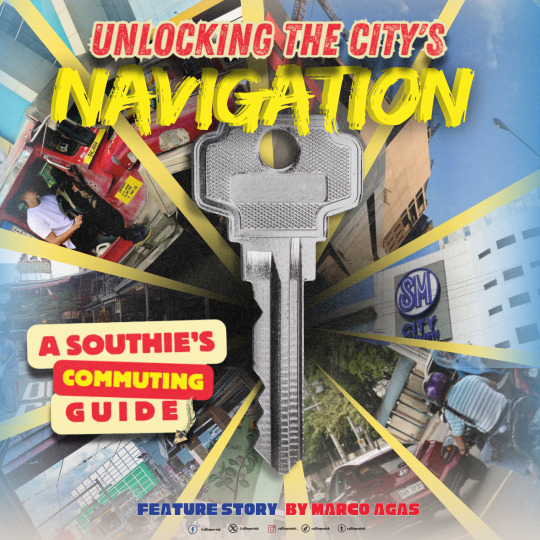
Written by: Marco Agas
Pubmat by: Justiniano Ceruma
0 notes
Text
BEST WAY TO ESCAPE; FREE UP YOUR MIND
As the world immerse on travel, people tend to visit scenic destination to relieve from stressful life. Especially for the Millennial generation who are known as the "Busy people" with regards to their personal life. Millennials are too engaged to earn money which lead to forget to take a break and enjoy life .
Here are some places in the CALABARZON that offer different activities that may give millennial a escape on stressful life:
1. CRYSTAL WATER IN ALIBIJABAN OF QUEZON
It is on the top on the list , It is stunning because of its natural beauty . It is known for its pristine mangrove forest and coral reefs, with its crystal-clear waters, abundant marine life, and interesting floating cottages. Alibijaban is a paradise for people who want to get away from the noise and chaos of the city.

2. HIKING IN MT. DARAITAN
It is famous for Sunrise view as this is the highest peak in Calabarzon region. Mt. Daraitan is a great sampler for hiking up the relatively unexplored Sierra Madre mountains, and along with other attraction in Daraitan, particularly the scenic, lunaresque Tinapak River, is a highly recommended dayhike or overnight destination from Manila.

3. EXPLORE TAGAYTAY
This considered as the second summer capital of the Philippines. It is known for its cool climate, stunning views, and abundant activities, this city offers a serene retreat from the bustling metropolis of Manila.

4. 360 CLOUD 9 ANTIPOLO
It is one of the most visited places in Rizal province which is located on the Sumulong Highway in Antipolo City. The hanging bridge is one of the main attractions and it’s one of the most visited hanging bridges in Rizal. From the viewing deck it offers tourists a panoramic 360-degree view of Antipolo City, the Sierra Madre mountain range as well as the entire Metro Manila skyline. On a clear afternoon, visitors can have an impressive view of the sunset.

5. ROB'S KITCHEN & CAFE IN BATANGAS
This location is ideal for anyone looking to get away from the city while also enjoying wonderful cuisine.Rob's Kitchen & Cafe is a restaurant and café with beautiful views of the crystal-clear ocean and even more breathtaking sunsets. Food options at this establishment include a multi-course menu and a la carte servings of various cuisines. The food offered here is a combination of local and foreign favorites.

ARTICLE TYPE: WEEKENDER
TARGET AUDIENCE: BUSY MILLENNIALS
TOPIC: BEST SCENIC DESTINATION TO TRAVEL IN CALABARZON
1 note
·
View note
Text
things i couldn't tell my diary # 3 - reminders of manila
after recently setting foot on up manila after three long years, i am reminded by a period of my college life that, in actuality, went by so rapidly but still felt like decades worth of memories.
i remember being so afraid of travelling to manila. i remember wanting to cry on my first ever train ride alone, and how the empathetic stare of the woman beside me comforted my fears (as if she knew exactly what was going on inside me head, as if she knew exactly that i was a province girl trying to arrive to my future campus safely). i remember crushing on this guy that i was next to when we were claiming our IDs. i remember having lunch with my then-blockmates for the first time, and how we've finally met each other after weeks of teasing each other on our group chats.
i remember taking a picture with jannie for the first time when we were inside the college of dentistry - just before i had my dental records checked. i remember how much we talked even before meeting in person, and how i was so relieved that we got to be friends. i remember crushing on her friend, which was a funny little feeling that allowed me to survive the remainder of my days in up manila.
i remember that first block lunch. it was in jollibee. i was trying to give a good impression. i remember it was hard for us to find seats because of how big of a group we were. i remember taking candid photos of father (kuya aleck) as he was intently listening to whatever johann was saying at the time. i think i could even copy his expression if i were to be asked.
i remember the first day of class and how we had to line up in our little quadrangle. and how afraid i was of standing under the tree because of the falling caterpillars. i remember only knowing a few people - still oblivious of the existence of people i would eventually bring to meet my parents to go camping one day ahhaha (hello nababasa nyo kaya to?)
i remember being really close with dan and fed. how we'd take pictures of each other outside the building after AKWE. how they'd visit me in my condo and how we'd watch the world revolve around us as we sat in the lounge at the 10th floor. i remember how dan was always down to join me in all of my spending. how he helped me pick my mint and gray running shoes that i still have. how we tried every milk tea shop in robman. how he came with me when i wanted to buy new pants in penshoppe. and how we took that mirror selfie - i was wearing a baby blue striped shirt and he was wearing his UE shirt. we were waiting for the others before we went to keei's place to sleep the night so we can be early for our PE finals in diliman.
i remember walking to roxas blvd with biboy and dan just because we had nothing better to do. i remember everyone debating where to go for lunch (but always ending up in the two nearby KFCs or mcdo). i remember talking with czarina at ministop over our fears of being stuck in a program we didnt like.
i remember how much my legs ached as i was trying to go up and down the stairs of rizal hall a day after PE classes. i remember thinking how sir enzo talks so quietly that most of the time i couldnt understand what he was saying. i remember the mirror pictures we were taking every after PE. i remember how sir enzo fed us pizza on the last day of classes.
i remember being so scared of having sir ken as a prof because of all the bad reviews he was given. i remember being afraid to attend sir ag's class because of how he loved using index cards to randomly call people. i remember loving maam rhozie's class, and how (and why) she is coco martin's ex-wife AAHHA (v1 peeps know!!). i remember dreading my STS class because of our odd professor. i remember feeling so thankful and guilty towards sir vio because of how understanding he was, sometimes i felt like i didn't deserve it.
and as much as i remember the good and amazing days - the bad days are just as vivid.
i remember dreading waking up every morning. i remember crying on my way to class because of a random panic attack. i remember my friends getting worried because i wasn't attending my classes. i remember crying to dan and fed in mcdo when i opened up why i was avoiding them. i remember crying in a bathroom stall on the right wing of rizal hall when i felt overwhelmed about pre-reg because i didnt know what classes to take anymore. i remember feeling left out because i was the only one in my friend group who failed math 83. i remember feeling ashamed of myself as i type another email to sir vio as to why i couldnt attend his class again.
i remember feeling really pitiful on my birthday as i skipped classes and spent it alone on our condo and celebrated with a subway sandwich. i remember constantly fearing losing my scholarship. i remember trying to hide my tears every time my parents would call. i remember how much my heart would ache when i had to say goodbye to my parents. i remember my head feeling physically heavy. i remember the constant doubt, anxiety, hopelessness. i remember trying to power through it all with whatever hope i had left.
i still do not understand how i was able to remember so much from that time.
to me, up manila will always serve as a reminder of a youth that has passed all too quickly. a youth that i tried to remember so much. when i was still oblivious of the world around me, surrounded by people who are also trying to find their places in the world.
to me, up manila will always serve as a reminder of my identity. a trial by fire that almost broke me. a safe haven with all the people i treasure the most.
i dont really know what the point of this is. maybe im just trying to write as much as i can as an outlet. yes. this is me dumping all of the emotions ive suppressed for the past few months. here they are now.
i miss you terribly in all your terribleness, up manila.
0 notes
Text
Journal
April 16, 2023
Sunday came and we went to church before it was time for my cousin to go home.
We went to Venice Grand Canal in McKinley Hills to bond more and to eat lunch. I had a lot of fun and I really got along with my cousin. We took a lot of pictures and also laughed a lot.
We planned to go to BGC after but sadly, we were already running out of time as the travel time from Taguig to Tanay, Rizal would be around 3 hours.
My cousin was loud on the way to their province, so when we dropped her home, the travel back to Binan, Laguna felt too quiet.
0 notes
Text
The Best Instagrammable Places in Laguna Philippines
As the holiday season approaches, it is evident that many families and friends intend to take a vacation, be it short or long, as a means of spending time and strengthening their relationships with their loved ones. Along with potential homebuyers who are constantly looking for the ideal house and lot for sale in San Pedro, Laguna, local residents and tourists search for the best Laguna tourist spots near their home where they can spend their free time as well as take the chance to learn about and explore more nearby local tourist attractions.
Apart from being known as the birthplace of the Philippine national hero — Dr. Jose Rizal, and a place where one of the most prominent theme parks — Enchanted Kingdom, where Princess Victoria's dream shop, Harry Houdini's magic shop and the famous space shuttle, is located; the Laguna province is renowned as the Resort Capital of the Philippines, which is why several tourists travel to spend their vacations there in order to breathe in the fresh air and get away from the city noise.
Oftentimes, it doesn't really matter whether their trips will take them to a well-known and premium location or not; instead, what matters more to them is whether the Laguna tourist spots they will visit is Instagrammable.
0 notes
Text
2022
What a year that was! One of the best years I've ever been in with so many blessings pouring in. All thanks to you, Lord. 🙏
Despite the country's election results, I am still so grateful for 2022 on a personal level.
Another year my family survived with no one getting hospitalized for significant health concerns. I pray that we continue to be safe and healthy in 2023.
I traveled a lot and the best part? I did it with the person whom I love the most. We celebrated our anniversary in Zambales (see Enzo's Hideaway) and many more travels 🛫, swimming 🏊🏻♀️ , and beaches 🏝️🌊 came after that - Pansol, Laguna; Visita Iglesia in Rizal, Pico de Loro in Batangas; Camp Agos in Daraitan; El Nido, Palawan; Aquascape Lake Caliraya; Los Baños, Laguna; and Boracay. We also ate a lot of good food this year! 🐷
For work, I went to two provinces - Lagawe, Ifugao, and Kauswagan and Sultan Naga Dimaporo in Lanao del Norte. No swimming but I did experience their food, sunrise, and sunset. I just basked in the fresh air Manila couldn't offer and appreciated the building-less surroundings. 🍃🌱
It was also a year that I received validation for the work I've been doing. ✍️Our published manuscript received awards and recognition from our institution and an outside agency. I couldn't be any more grateful. (I hope I get back my motivation in writing this year and finish another manuscript). We also pushed through a feedback meeting for our project that was required to be done before December ends, and it went well. 💪🏼
Two years after the pandemic, we finally were able to visit relatives in Bicol for Christmas. 🎄 This time, we didn't need to wait in long lines of chance passengers to ride a bus; my boyfriend drove us to our town safely (bonus: no nausea and vomiting, finally!!) 🚗 and had my mother reunited with her siblings whom she didn't see for a while. 🏠
I feel blessed that somehow I was able to provide for my family and still enjoy doing other things (thank you, Half!). 😌
I'm happy that I started and ended the year with Half - my best friend and greatest love. 💕 Twelve months seemed short now that I'm writing the highlights but I know we did face many challenges - individually and together. I am so glad we always made it out together. I appreciate all that you are and what you do for me and my family. I am always proud of you. Let's keep doing things and going on adventures together! 👩❤️👨
1 note
·
View note
Text
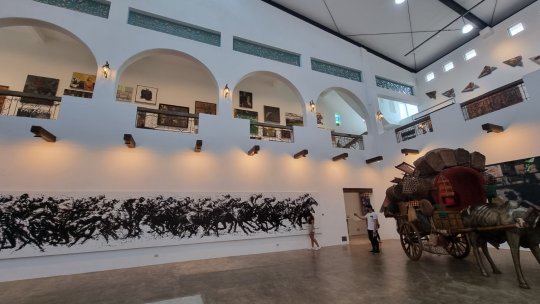
Arts have the power to evoke a wide range of emotions, from awe to revulsion. Additionally, there is a deeper connection between art and mankind since art portrays the human experience. Because of this connection, we may be deeply moved by works of art. The distinction between art and art-like is that the former has a deeper meaning than the latter, which is purely cosmetic. Keep in mind that all genuine works of art convey some kind of message, whether good or bad. This training and exposure to actual works of art have taught me that much. In fact, ever since we first started this course, I've been looking for real-world examples of art to dissect and contemplate. My art-searching adventures resulted in a greater appreciation for the world around me.
Antipolo, located in the province of Rizal, is a well-known tourist attraction. It is also the location of the Pintô Art Museum. In 2010, Dr. Joven Cunanang launched the museum so that other people might appreciate the art collection he had amassed. This exhibition has works from many different periods and styles, focusing on the new and modern (assemblage, mixed media). The museum was split into six parts by the artist Antonio Leao, and each of these sections is housed in a villa similar to those seen in the Spanish and Mediterranean countries. This can be seen clearly in the museum's architecture, as well as in the finishes applied to the doors and windows. The museum's name was derived from a phrase in the Philippine language that literally means "door."
A trip to the museum is like boarding a pintô and traveling to heaven. This show features works by Filipino artists who have, throughout their careers, thought about our country's history and culture. During my walk through the museum, I found many pieces to be interesting. However, the following three stood out to me the most: Karnabal, owned by the Salingpusas; the Circus, owned by Mikel Parial; and Balancer, owned by Rodel Tapaya-The Garcia.
If you're used to museums where every piece of art is so well protected behind ropes and glass that you're afraid to get within a meter of it because you might set off an alarm, the Pinto Art Museum will be a pleasant surprise. The opposite is true; the setting is pleasant, casual, and warmly welcoming. There's also a delightful restaurant where you can enjoy your meal while gazing out into the garden. The smooth and unified way the art is put together makes the viewer want to stay and look around, think, and feel. While there are a few vintage oil paintings on display, most are recent works by regional painters. Even in this digital age, when babies use touch screens to draw and paint, the art of the twenty-first century needs to be appealing and strong to get the attention of young people, if not their love.
In order for audiences to understand works of art, they must first be acquainted with the fundamental visual elements and principles of design upon which the works are built. The piece of artwork demands that the observer to have a particular degree of knowledge in terms of the style, form, and content of the piece. It is impossible to have a complete appreciation for the visual arts if one does not have this background information.
0 notes
Photo

This year, I challenged myself to travel back to Bacolod, Iloilo, and Dumaguete interconnectedly. 🧭 For the first time, I experienced crossing the border from Bacolod to Dumaguete. ☦️ Since these two different provinces form the island of Negros, 🏝️ it can be travelled by land for hoursss. 🚗 Thankfully, I'm not the driver so I was asleep during the long drive. 😪💤 While in Dumaguete, I revisited Rizal Boulevard and reminisced how I reached the place in 2019. 💭 Out of adventure, I escaped from my distant relatives' house in the southern side of Cebu and boarded a ferry, just to get to this famous Dumaguete spot. 😁 When I strolled the boulevard again last October, the vast sea was like a stone's throw that made me feel very close to the Queen of the South. 👑 Bacolod is also a good jump off point to Iloilo via ferry. 🛥️ Simplicio Palanca Seaport Terminal is an unforgettable place because of an epic (fail) experience. 😅 In 2019, we missed the last trip to Bacolod and got stuck in Iloilo! 🤣 Luckily this year, even if the trips are fewer, I managed to board in time ala buzzer beater 🏃🏻♀️🚨 from the Land of the Negrenses to the Land of the Hiligaynons! 💕 #lifeonthemove #diytrip #visayashopping #wheninbacolod https://www.instagram.com/p/ClN8kbAvx-5/?igshid=NGJjMDIxMWI=
0 notes
Text
Monster Match #22: Tikbalang

The Traveler's Masterlist
For @severedreamerbeard: You’ve been matched with a tikbalang!
Tikbalangs, or Tigbolan, scare travelers by leading them astray and playing tricks on them, such as making them return to an arbitrary path, no matter how far they go or where they turn. A superstition popular with the Tagalogs of Rizal Province is that Tikbalangs are benevolent guardians of elemental kingdoms. They are usually found standing at the foot of large trees looking around for anyone who dares to bestow malignancy on their kingdom's territory.
It is a tall, bony humanoid creature with the head and hooves of a horse and disproportionately long limbs, to the point that its knees reach above its head when it squats down.
In some versions, the tikbalang can also transform itself into human form or turn invisible to humans and they like to lead travelers astray. Tikbalang is generally associated with dark, sparsely populated, foliage-overgrown areas, with legends variously identifying their abode as being beneath bridges, in bamboo clumps or banana groves, and atop Kalumpang (Sterculia foetida) or Balite (Ficus indica) trees.

You met Bayani in your art class on your very first day. He had immigrated from the Philippines to attend college a year before you started school, and due to his unusual appearance, had trouble making friends. You hadn’t seen anyone like him before, and where that made some people uncomfortable, it fascinated you. He was such a sweet person that you couldn’t help befriending him.
It took him some time to open up to you, but once he did, you realized how homesick he was. His kind typically lived in the same grove they were born in for their entire lives. Moving away was highly unlikely, but to actually integrate into society was practically unheard of. As far as you knew, he was the first of his kind to attend college. Anywhere. In history.
The only reason he wasn’t in the news was because he had specifically requested not to be. In fact, his advocates had filed injunctions to prevent the media from reporting on it. He didn’t want attention for doing what millions of people did all the time.
His sweetness made you friends, but it was the shy humility and talent that attracted you to him. He didn’t think much of himself, often having heard the awful things people said about him, and you wanted him to think of himself the way you did: unique and intelligent and kind. You were nervous about speaking your attraction to him. He was new to society and you weren’t sure of his preferences, or if he was even looking for any sort of romance.
“What is it like? Your home?” You asked him once during class. The two of you were sitting a little bit away from everyone else to give his long legs enough room without kicking someone else’s chair or easel.
“It is beautiful,” He told you, starting to sketch on a fresh page. “I lived deep in the jungle on the island of Luzon, near a steam that branched from the Magat River. It was lush and green. It never grew cold there, and there were many birds. My whole family had lived there for hundreds of years undetected before we learned of the Mass Integration. I miss it.”
“Why did you leave?”
“We had only heard that non-human creatures had joined humanity a few years ago, but we were still nervous to reveal ourselves. I was the first to decide to leave and see what the world was like. When my time in college is over, I plan to travel for a few years, then return with what I’ve learned. The rest of my clan will then decide if they wish to leave or stay.”
“Will you stay home after that?” You asked him.
“I don’t know yet,” He admitted. Looking over, you saw him drawing the thick underbrush of a forest. “I suppose I will decide when the time comes.”
“What’s been the hardest thing? Was it difficult to get into college?” You asked him.
“No, actually, passing the test was relatively easy after I took that year of tutoring. And the scholarship I received has made it rather easy.” He stopped sketching and sighed, looking out of the window. “I… I suppose I… did not realize how… small… people can be. How petty. How… superficial? Is that the word?”
“Yeah, I’m thinking that’s right,” You replied.
He sighed. “I thought, because non-humans felt safe enough to reveal themselves, that it would be… less…” He sighed again sharply. “I can’t think of the words.”
“It’s okay, I understand,” You said. “Humans have a long history of not getting along with each other, so it’s unfortunately not surprising that they aren’t exactly nice to other species of people.”
“I can’t understand that,” He said with a grimace.
“Honestly, I can’t either,” You replied sadly. “Are you drawing home?”
“Yes,” He said, his mood brightening. “See? I can’t get the shape of the houses right, though.”
“Oh,” You said, scooting closer. “What kind of houses are they?”
“Small structures, usually one room, nothing grand. Most had open sides with only one or two complete walls, built up off the ground in case of flooding. Since it gets very hot, it was better to have open homes where the breezes could blow through, and we didn’t mind the rain.”
“Like this?” You asked as you sketched.
“Sloped roofs,” He said. “And they’re all pointed toward the river, so that the runoff drains that way. Yes, just like that.”
After sketching for a few more minutes, you took your paper and laid it over Bayani’s sketch, merging the two perfectly.
“Ha,” Bayani said softly. “There it is. Home.”
“I’d like to see it one day,” You said.
“Perhaps you will,” He replied.
“Isn’t it closed to outsiders?”
“Ordinarily,” He said. “But we make exceptions for friends.”
You smiled. “Are you going to enter the art competition they had on the notice board?” You asked him after a moment. “First prize is ten thousand dollars. You could go traveling on summer break, like you want to. Get a head start on seeing the world.”
“I don’t know,” He said. “I don’t think I’m good enough yet to enter. What about you? You’re a wonderful artist.”
“Thanks,” You said. “But I’m not exactly amazing either.”
“You’re incredibly talented!” Bayani replied, earning a shushing from the professor. He ducked his head and spoke in a lower whisper. “You’ve got to win.”
“I’ll enter the contest if you will,” You told him.
“But I don’t even know what to do for the contest,” Bayani said, their face scrunched. “The theme is comfort. I’m not exactly comfortable right now.”
“I know,” You replied. “But there are things that comfort you. Your home does. Do that.”
“Meh, that’s predictable. I’d have to do something original to win.”
“Hmm, that’s true.”
“You enter and I’ll cheer you on,” Bayani said, smiling. “Competition isn’t natural to my people, so I’m still trying to understand it.”
“That’s why you should enter!” You insisted. “You have such a unique style, it’s sure to win.”
“Well, if you’re doing it, then I will, too. If only to challenge myself.”
“That’s the spirit,” You said as the professor called for the end of class. You began packing up your things and getting ready to leave. Bayani always let everyone leave first, and you always waited for him.
“I do find you a comfort,” Bayani said. “You remind me of a friend I had back home. We were always together. Until he found a mate, that is.”
“And you?” You asked, attempting to be nonchalant. “No interest in a mate?”
“Mm,” He replied noncommittally. “Not really. It’s hard to be interested in people I’ve known my whole life. There’s nothing new to learn about them. I feel like discovering new things about your partner is half the fun of loving them.”
“But what about when you’ve learned all there is to know about a person? Do you stop loving them?”
“Not necessarily,” He said, contemplative. “When you learn all there is to know about someone, then you change the situation and learn new things. I like to learn, and there’s no end to learning, now that the world is bigger than I first thought. And now that I can see the world and all the people in it, I can find someone who understands. Does that make sense?”
You laughed a little. “Honestly, that makes perfect sense.”
“What do you find comforting?” He asked. “In terms of the contest?”
“It differs on how I feel at the time,” You said. “If I’m scared, I like being hugged. If I’m sad, I like hugs. If I’m lonely… Oh. Well, I guess I’m not as complicated as I thought.”
He laughed. “How do you convey that through art?”
“I have no idea,” You said, laughing too. “I suppose I’ll figure it out.”
“What will you do with the money if you win?”
“Dunno,” You said. “Maybe start paying off my student loans.”
“Money is another thing that is odd to me,” He said, his face scrunching again like it did whenever he encountered a notion that was foreign to him. “At home, if you needed something, it was given to you. Debt is not a concept we believe in.”
“I wish it was like that everywhere.” You replied wistfully.
Outside of the Arts building, he bid you farewell. “I should hurry. The bus will be here soon and I don’t want to be late getting home. Today is my host sister’s birthday, and they’ve invited me to her birthday dinner.”
“Oh, have fun!” You said, waving. “Tell them I said hi!”
He waved back and began to jog toward the bus stop.
You walked back to your car, fumbling for your keys, lost in thought. Comfort was such an amorphous thing. Everyone had a different idea of what was comforting to them, but they often overlapped. Music, physical touch, objects, food. Different things, similar themes. How would you find a way to convey what comforted you the most?
You thought back on Bayani describing his home, the soft look of fondness he had when he was drawing it. His expression was familiar, if distant. Maybe it wasn’t your comfort you should focus on. Bayani was homesick, that much was obvious. What could you do to help?
At home in your apartment, trying to work with your roommate singing drunkenly along with the TV, you stared at an empty page. You’d been sitting there for an hour trying to draw something, but nothing was coming to you. Banging your head against the desk hadn’t helped, though it did cause your roommate to rush in with a half-empty vodka bottle, convinced someone was trying to break in. After taking the bottle awawy from him and putting him to bed, you sat back down at your desk and sighed, the blank paper mocking you with its… blankness. Fuck you, paper.
Start simple, you told yourself. A tree. Draw a tree.
You began to draw, and progress was stilted at first, but after a while, you tuned out sound and focused on your work. Time blurred and passed as if you were asleep, and before you knew it, the sun was rising.
Well, you were going to be useless today.
Looking back down, you were a little surprised to see Bayani on the page, sitting on the porch of one of those open-faced houses of his home. He was crouched over paper, drawing an undefined sketch. His face was relaxed, his posture at ease. His legs dangled over the side of the raised platform, and even as long as his legs were, they didn’t touch the ground. There were no stairs, but you imagined his people had no trouble getting up and down. Surrounding him was the forest of his home as he had described it to you, with the tall trees and flowers and birds nesting in the branches. There were younger Tikbalangs playing in the background, the younger siblings he spoke of so often.
“So this is what comfort looks like,” You said softly. “I think I get it now.”
It took a week before you were satisfied with the result, but you entered it without telling Bayani. You weren’t sure how he would feel about you using him as the subject of your submission, and it wasn’t likely that you’d win anyway, so he would probably never see it.
Two months later, you got a letter in the mail from the contest and put it away in your backpack, not thinking anything about it. When you got to school, however, it fell out of your pack and Bayani picked it up.
“What’s this?” He asked.
“Oh, I think it’s something from the art competition.”
“You entered?” He said. “That’s great, you didn’t tell me!”
“I figured I wouldn’t win, so there was no point.”
“It’s unopened. Didn’t you even look?”
“Nah,” You said. “It’s probably just thanking me for my participation or something.”
“Can I open it?”
“Feel free.”
As you were getting your stuff set up to start class, you heard Bayani open the letter and a pause, then a gasp.
“You… won.”
“What?”
“You won!” He offered you the letter. “Look!”
“You’re shitting me,” You said, taking the letter and reading it. There, at the top in big bold letters, was Congratulations! “Well, fuck me.”
“What did you submit?”
“Oh…” You cleared your throat. “There’s a copy here.” You handed it to him.
He looked at it, and was silent for several minutes. You watched him apprehensively, the din of the class fading from your ears and it seemed as if you were the only two in the room.
“This is me,” He said quietly.
“I hope you don’t find this offensive,” You said anxiously. “I just remembered everything you told me about your home and it sounded amazing. I didn’t even realize what I was drawing until I was finished.”
“It’s beautiful,” He said.
“Oh…” You replied. “Thank you.”
He looked at you with a sweet smile. “It’s no wonder you won. I knew you could.”
You smiled back. “Thanks. I was thinking… maybe I could use the money and take us on a trip to your home. I know how homesick you are.”
He shook his head. “You should spend the money on what you want, not on what I want,” He replied.
“That is what I want,” You said. “Although… if I’m honest, there is one other thing I’d like to do.”
“What’s that?” He asked.
“Take you on a date?” You said hopefully.
The smile widened. “A new experience. Will I get to learn more about you?”
“I’m hoping you’ll learn everything about me, but I also hope you won’t get bored.”
He reached across and took your hand. “I don’t think that’s possible. In fact, I think we’ll be learning about each other for quite a long time. I look forward to all of it.”
You squeezed his hand in returned. “So do I.”

To get your own Monster Match, buy me a Kofi!
Since my work is no longer searchable, please do me a favor and reblog this story if you enjoyed it. Help me reach a wider audience! To help me continue creating, please consider becoming a Patron or donating directly to my PayPal.
Thanks for reading!
My Masterlist
The Exophilia Creator’s Masterlist
86 notes
·
View notes
Text
The Ilocos Sur Naturals Beauty
hello everyone its me Aprilyn Uclusin, Allow me to show you some of the province of Ilocos Sur's natural beauty and wonders.
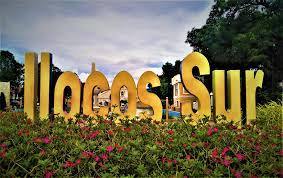
Ilocos Sur was founded by the Spanish conquistador, Juan de Salcedo in 1572. It was formed when the north (now Ilocos Norte) split from the south (Ilocos Sur). At that time it included parts of Abra and the upper half of present-day La Unión.
The province is famed for its diverse culture and history, as well as its heritage sites, adventure parks, and, of course, its cuisine. This time, though, we'll be focusing on the wonderful sites to visit in Ilocos Sur.
1. Vigan Cathedral

Another Vigan Ilocos Sur tourist spot to check out is the St. Paul’s Cathedral. Also known as Vigan Cathedral, it is considered a major religious landmark not only of northern Luzon but the country as well. The original structure was built in 1574 with wood and thatch. It was just a mere chapel then. It was only in 1641 when it was turned into a church and was completed in 1800.
The Vigan Cathedral follows a Baroque architectural design that has been modified by Ilocanos to strengthen the structure against earthquakes which is known as “Earthquake Baroque.” Don’t miss this as it is one of the most beautiful Vigan tourist spots.
Highlight:
Earthquake Baroque architecture
2. Calle Crisologo
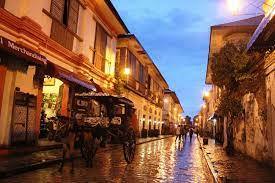
If you want to travel back in time, Calle Crisologo is the best place to be. This tourist spot in Vigan City is a street of old Spanish structures, mostly houses of wealthy families and Filipino-Chinese traders. This is where you’ll see the famous cobblestone streets that represent Vigan’s image.
Must-read: Calle Crisologo: Walking Through A Tale of War and Love
Highlights:
UNESCO World Heritage Site
Cobblestone streets
One of the world’s best preserved Spanish colonial towns
3. Bantay Church Bell Tower
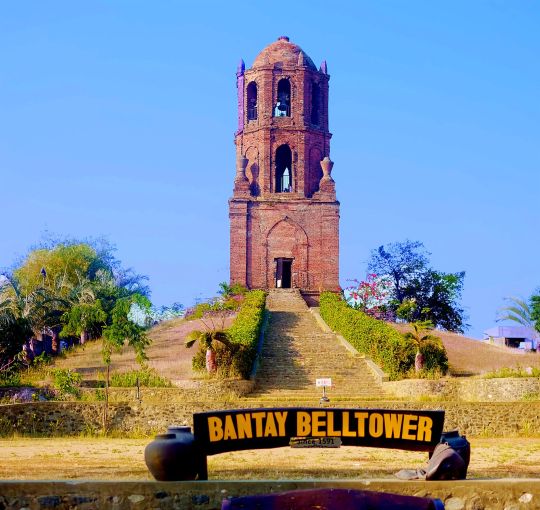
The Saint Augustine Parish Church, commonly known as Bantay Church, is a Roman Catholic church in Bantay, Ilocos Sur in the Philippines. The church was dedicated to St. Augustine of Hippo. It is also known as the Shrine of Our Lady of Charity (Shrine of Nuestra Señora de la Caridad) housing the miraculous image of Virgin Mary as Our Lady of Charity, crowned by the Pope as the patroness of Ilocandia on 12 January 1956.
The old historic belfry of the church known as the Bantay Tower, which served as a watchtower for pirates back in the Spanish colonial era, gave the town its name - bantay (meaning to guard). Established in 1590, the church is one of the oldest in the Ilocos Region
The Bantay Church Bell Tower served as the town’s watchtower in 1591. The magnificent view that this tourist attraction in Ilocos Sur may have been the reason why it was supposedly “Diego and Gabriela Silang’s favorite date spot during the 17th century.”
Highlights:
Located on a hilltop overlooking the province
Perfect for picture-taking
4. Crisologo Museum
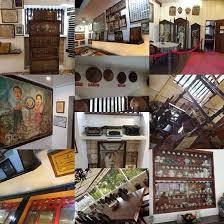
Crisologo Museum is an ancestral home-turned-museum belonging to one of Vigan’s most prominent sons, the late congressman Floro S. Crisologo. His wife, Carmeling, had their home converted in memory of Floro after he was assassinated in Vigan Cathedral.
Highlight:
A cool museum showing memorabilia and some artifacts of Crisologo family
5. Baluarte Resort and Mini Zoo

Looking for a tourist spot in Vigan City that kids would love? You’ll never go wrong with Baluarte Resort and Mini Zoo. Just 10 minutes away from Calle Crisologo, Baluarte Resort and Mini Zoo lets you get close to nature’s wonderful creatures from cute little birds to big cats a.k.a. tigers. This Vigan Ilocos tourist spot is also dubbed as the “Home of the Big Cats in Vigan,” as it shelters Bengal tigers, white lions, and leopards.
Related article: Top 10 Vigan Tourist Spots You Should Explore Soon
Highlights:
Close encounter with the animals
Perfect for families with kids
6. Pagburnayan Jar Factory
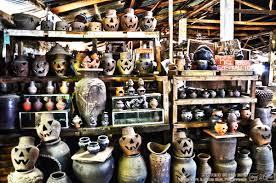
When someone gives you a jar from Vigan City, know that it’s of good quality. Among the most famous jar factories in the province is the Pagburnayan Jar Factory. Here they make the jars from a grade-A clay which is abundant in the area.
Pagburnayan, comes from the root word burnay. It refers to the hand-crafted earthenware pots made from Vigan. Bantog clays these are called. They’re dug from the western barangays of the city. I once asked a cuchero who was touring me around where they would get more of these, if supplies ran out. Impossible, he says, they’ve been sourcing their materials from that area since Chinese immigrants came to Vigan City and established the craft.
Highlight:
One of the few authentic jar makers in Vigan
7. RG Jar Factory
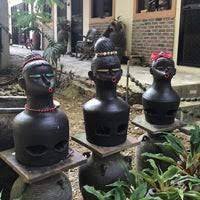
Another tourist spot in Vigan City that lets you unleash the creativity in you is the RG Jar Factory. Like Pagburnayan, you can also buy jars and pots here and even make your own. The jar makers can demo how it’s done and let you create your own clay pot or jar. The place does not have any entrance fees whatsoever but you could donate any amount, it’s up to you.
Highlight:
Lets you create your own jars
8. Syquia Mansion Museum
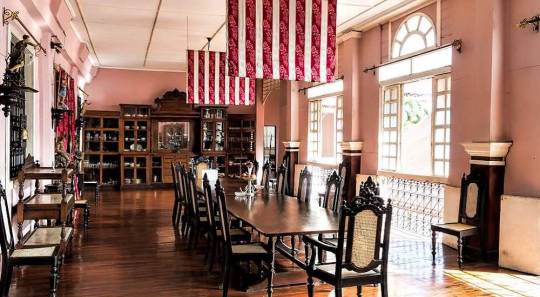
Want to see how the wealthy lived in the past? Go to Syquia Mansion. Located in Quirino Boulevard, this tourist spot in Vigan City has been decorated with antique furniture, paintings, and exhibits from the time of President Elpidio Quirino, a native of Vigan. The stunning house was owned by Quirino’s wife, who belonged to the affluent Syquia family.
Highlight:
Home to ancient furniture, relics, and paintings
9. Padre Burgos House
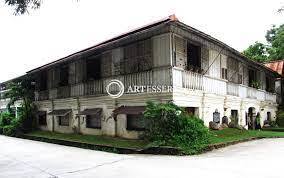
If you’ve read Philippine history books, you’ll surely be familiar with the three martyr priests during the Spanish times: GomBurZa. Among those three priests lived in Ilocos Sur and that is Padre Jose Burgos. His home is now a famous attraction in Ilocos Sur. Padre Burgos House features different exhibits and a look to the priest’s life.
This museum is the ancestral house and birthplace of priest patriot Fr. Jose Burgos. Known as Padre Burgos House, it is one of the notable historic structures of Vigan, the capital of the province of Ilocos Sur. It is a two-story structure located near the Provincial Capitol and close to St. Paul’s Metropolitan Cathedral. It was renovated by the Filipinas Foundation, Inc. and inaugurated on May 3, 1975. In January 1989, a Contract of Lease was executed by the Ilocos Sur Historical and Cultural Foundation, Inc. leasing the memorabilia for 50 years, and turning over the administration to the National Museum.
Highlights:
Showcases various exhibits and collections
Shows how Padre Burgos lived
10. Plaza Salcedo
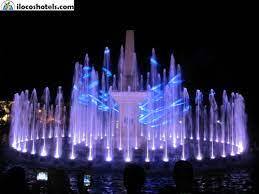
Located between Vigan Cathedral and the Provincial Capitol, Plaza Salcedo is a great spot for picture taking at day and turns to a stage of dancing lights at night. The water in the fountain is always right on cue and dances to the beat of the music. What a sight to catch while munching on the best Vigan empanada. Don’t miss this Vigan Ilocos tourist spot for a fun night!
This is like their version of a mini Luneta Park. Fronting the UNESCO protected Vigan Cathedral , it is flanked by several offices , fast food outlets , shops . It has its own dark history , its own Rizal monument , but gets filled at night with its renowned dancing fountains which is free to the public. For the sake of photo opportunities, just include this in the Vigan itinerary . One of the must see.
Highlights:
Dancing fountains
Near many food stalls
11. Hidden Garden
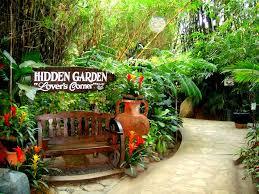
Another attraction in Ilocos Sur that will delight your eyes and tummy is Hidden Garden in Vigan. It’s not just a garden though as there are food stalls and a cafe where you can eat while appreciating the beautiful view. They also sell plants and flowers there.
Highlights:
Lots of souvenir items made from indigenous materials
Very Instagrammable spot
12. Mindoro Beach of Vigan
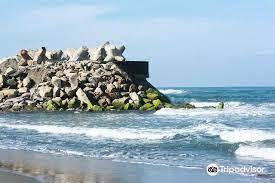
Vigan Ilocos Sur tourist spots are not just about historical places and heritage sites but it also takes pride in sites for RnR. One of the best spots is Mindoro Beach that offers a front-facing view of the West Philippine Sea. The sand there is black fine and smooth as powder.
Highlights:
Not too crowded
Perfect place to relax because of the calming ambiance of the beach
13. Ilocos Sur Adventure Zone
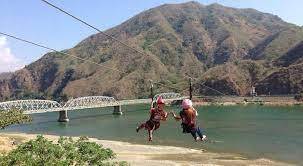
If you’re looking for some adrenaline rush, add Ilocos Sur Adventure Zone to your Ilocos Sur itinerary. Here you can ride a zip line that traverses the towns of Santa and Bantay, so you have a perfect view of the Abra River down below as well as the old and new Quirino bridges.
The sports and recreation facility also offers more adrenaline-pumping activities like a giant swing, kayaking, and rock climbing and rappelling at the rocky Banaoang mountains. This is definitely one of the most fun tourist spots in Ilocos Sur that’s hard to miss.
Highlights:
Recreational activities
Perfect for family and friends
14. Sta. Maria Church
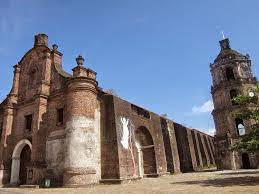
Most of the famous tourist spots in Ilocos Sur comprises old churches that are definitely worth visiting. Among the notable ones is the Sta. Maria Church. This Santa Maria Ilocos Sur tourist spot is a UNESCO-listed Heritage Site as part of the baroque churches in the country. The Augustinians had this built in the 1760s. This destination is a historical piece that tells a story about the country’s past. You’ll also see its bell tower several meters away from the church which is a layout that is unique to its time.
Highlights:
Features baroque architecture
UNESCO-listed Heritage Site as part of the baroque churches in the Philippines
15. Candon Church

Also known as the Saint John of Sahagun Parish Church, Candon Church was constructed with an Earthquake Baroque design like most other churches built hundred years ago.
What makes this Candon City tourist spot fascinating is its four-storey octagonal bell tower that has alternating open and blind apertures, a balustrade and is topped by a campanile. Don’t miss this as it’s one of the must-visit Candon Ilocos Sur tourist spots.
Highlights:
Earthquake Baroque architecture
Octagonal bell tower
16. Narvacan Church
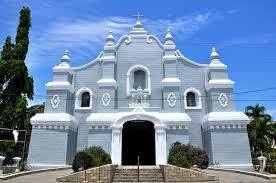
Established in 1576, Narvacan Church, also known as Saint Lucy Parish Church, first served as a visita and a first house of worship for the locals. This church stood the test of time and survived many natural calamities and the two World Wars. This Narvacan Ilocos Sur tourist spot is definitely a must-visit.
Highlight:
Known as one of the first seats of Christianity in Ilocos
17. Sangbay ni Ragsak Falls

If you want to take a break from the historical places in Vigan Ilocos Sur, refresh yourself by taking a quick dip at the Sangbay ni Ragsak Falls. Its name is an Ilocano term which means “Falls of Happiness.” This 30-meter high Suyo Ilocos Sur tourist spot attracts both local and foreign tourists alike because of its picturesque view even if it’s located in a remote area.
Highlights:
Perfect for a quick dip
Stunning surroundings
18. Archbishop’s Palace
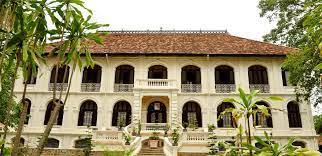
Sitting right next to Vigan Cathedral is the Archbishop’s Palace. What makes it interesting is its architectural features that include sliding capiz shell windows, cut-out decorations with flower motifs, and a garden.
This Vigan Ilocos tourist spot miraculously survived the destruction brought by World War II and it is the only surviving example of an 18th century archbishop’s palace in the country.
Highlights:
The only remaining 18th century palace of this kind in the Philippines
Museo Nueva Segovia that is home to a collection of priceless ecclesiastical artifacts and relics from other churches from around the Ilocos region
1 note
·
View note
Text
Hi! Are you looking for a place you want to visit? To help out, we have listed down the best places to visit here in the Laguna. As a Grade 12 students currently taking General Academic Strand (GAS), one of my major subjects is the Tour Guiding and Escorting where we are always doing a virtual travelling tour, and the Empowerment Technologies, that’s why I know how to share with you the information that you needed to know in the place that you’ve visit soon!

First, let me introduce to you the province of Laguna, this province located in the CALABARZON region here in Luzon. Laguna de bay, which is the largest lake in the Philippines, is almost surrounded by the whole province of Laguna. The province got its name from the Spanish word "lago", which means lake. Laguna is known as the birthplace of Jose Rizal, the national hero of the Philippines. Laguna is also considered a treasure trove of different cultures and influences passed down and maintained for hundreds of years. From breathtaking views to historical structures, the province of Laguna remains to be one of the country’s top tourist destinations.
Best Time to Visit Laguna
The dry months of December-May are always a great time to visit because there’s very little chance that it will rain. It also better to visit on a weekday. But please note that most museums like the Rizal Shrine in Calamba are closed on Mondays. If your only available time is the weekend, it’s alright. Go regardless.
Here are some places that you must visit in Laguna:
1. Pagsanjan Falls

Possibly one of the most popular waterfalls in the country, and top-of-mind tourist spots in Laguna, the majestic Pagsanjan Falls is undoubtedly a must-visit. The journey to the famous falls alone is filled with breathtaking.
2. Rizal Shrine

The Rizal Shrine in Calamba is a replica of our national hero’s childhood home turned museum. The museum tells the story of Rizal’s many phases of life from when he was a young boy, to his studies in Europe, all the way to his death.
3. Nagcarlan Underground Cemetery

This national historical landmark was established during 1845. The cemetery was used to bury the town’s common residents, while the underground crypt was where the Spanish friars and other notable individuals of that era were laid to rest. It’s the only one of its kind in the country.
4. Mt. Banahaw

If you’re in need of some peace and quiet, it’s a good idea to make the trip to Mt. Banahaw. Though it’s more known as a popular hiking destination, the volcano is also considered a pilgrimage spot or “holy mountain" for locals. Even without taking the climb, you will pass by Bangkong Kahoy Valley where you’ll meet friendly locals and get a glimpse of Laguna’s beauty.
5. Makiling Botanical Gardens

The Makiling Botanical Gardens is for those who want to experience the best of nature without having to brave a steep hike. The gardens are paved with trails you can safely follow, and if you have time, you can take the loop all the way back to the entrance. Along the trail you’ll see; towering greens, rare species of trees and plants, and a stream that cuts through the property.
6. Paete Town

Paete Town is located in the north-eastern part of Laguna, along the shores of Laguna Bay. Paete is most famous for its large population of craftsmen who are highly skilled in wood carving and embellishment.
7. Laguna Churches

Laguna is one of the most famous destinations for Catholics especially during the Visita Iglesia season. The province is home to a number of centuries-old churches that date as far back as 1500s. If you’re not the religious type, the sight of the ancient architecture alone is worth the trip.
Laguna’s Most Famous Delicacies
Travelers escape to the Laguna countryside for many reasons. Families relax in the hot spring resorts. Others drive to Laguna for newer attractions, but what makes Laguna a road trip favorite is the delicious delicacies you can buy in roadside stalls and souvenir shops. The sight of buko pie (young coconut pie) stands vying for attention is a potent reminder that you are indeed in Laguna. Nevertheless, many of the province’s food finds are Filipino culinary icons.

There is much to love about Laguna, especially with the sweet and savory delights on this list.
Laguna is such an awesome place. There are many tourist attractions and many mouth-watering delicacies. Filipinos should just visit places like Laguna instead of going abroad.
It is impossible to visit all these famous tourist spots here in Laguna in one go unless you have all the time in the world. But carefully planning out your Laguna itinerary will surely take you to some of the most unforgettable landscapes and fun-filled adventures you will ever see and experience.
If you want to get to know Laguna more, here’s the video to see how Laguna is a wonderful place that you must visit!
Halina’t tunghayan natin ang likas yamang kalikasan at kulturang walang kapantay sa lalawigan ng Laguna. Tara na! Masaya sa Laguna!
Link: https://youtu.be/q6yQIHlNS7A
1 note
·
View note